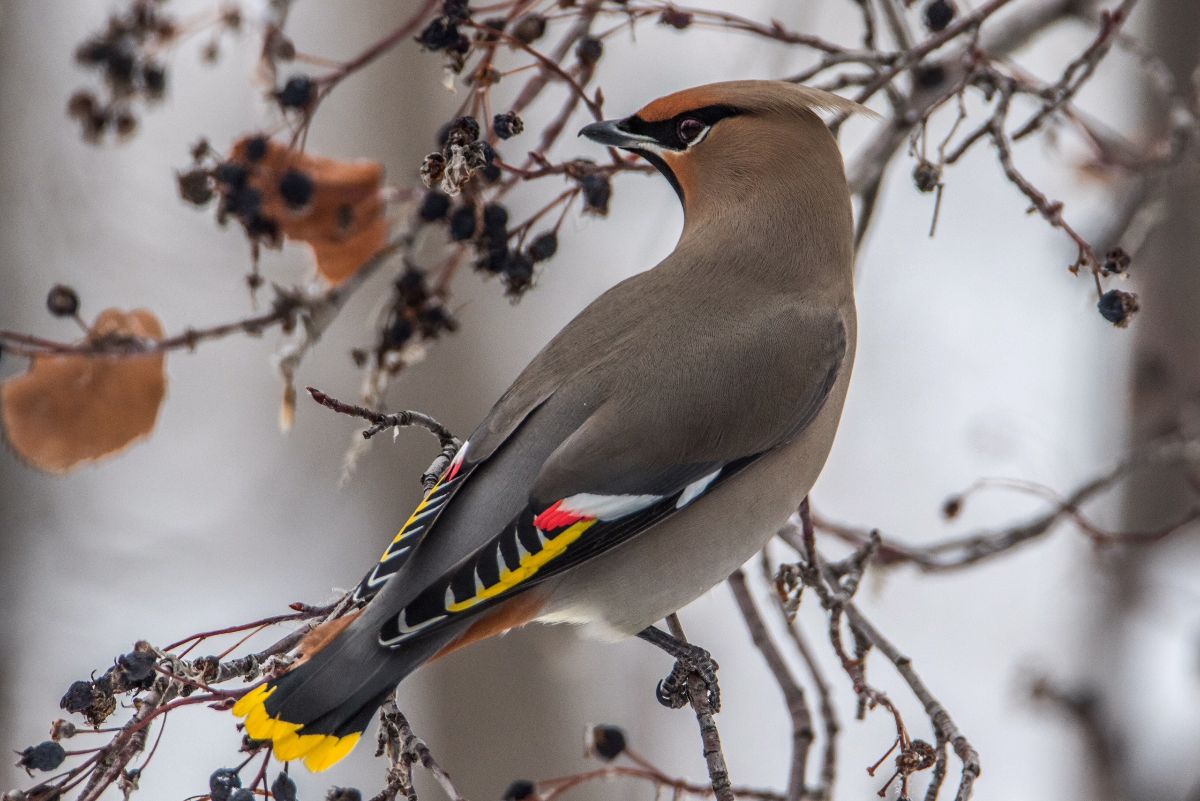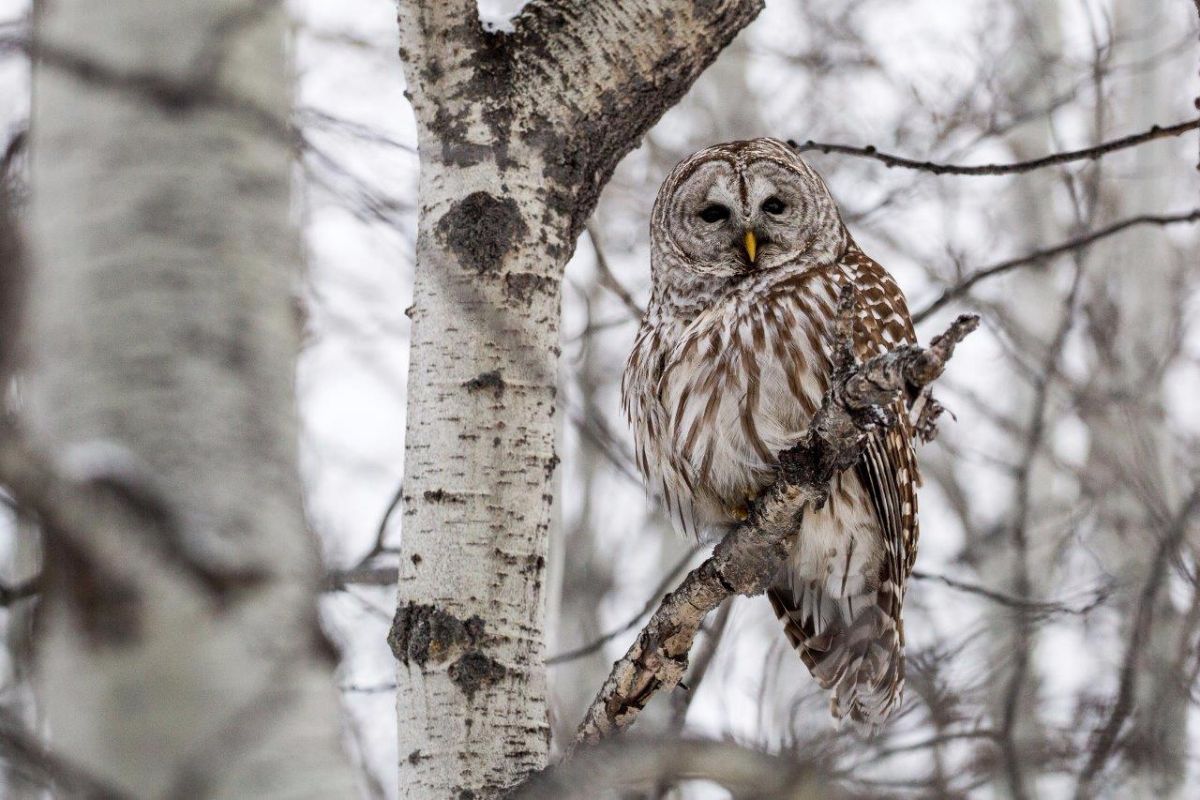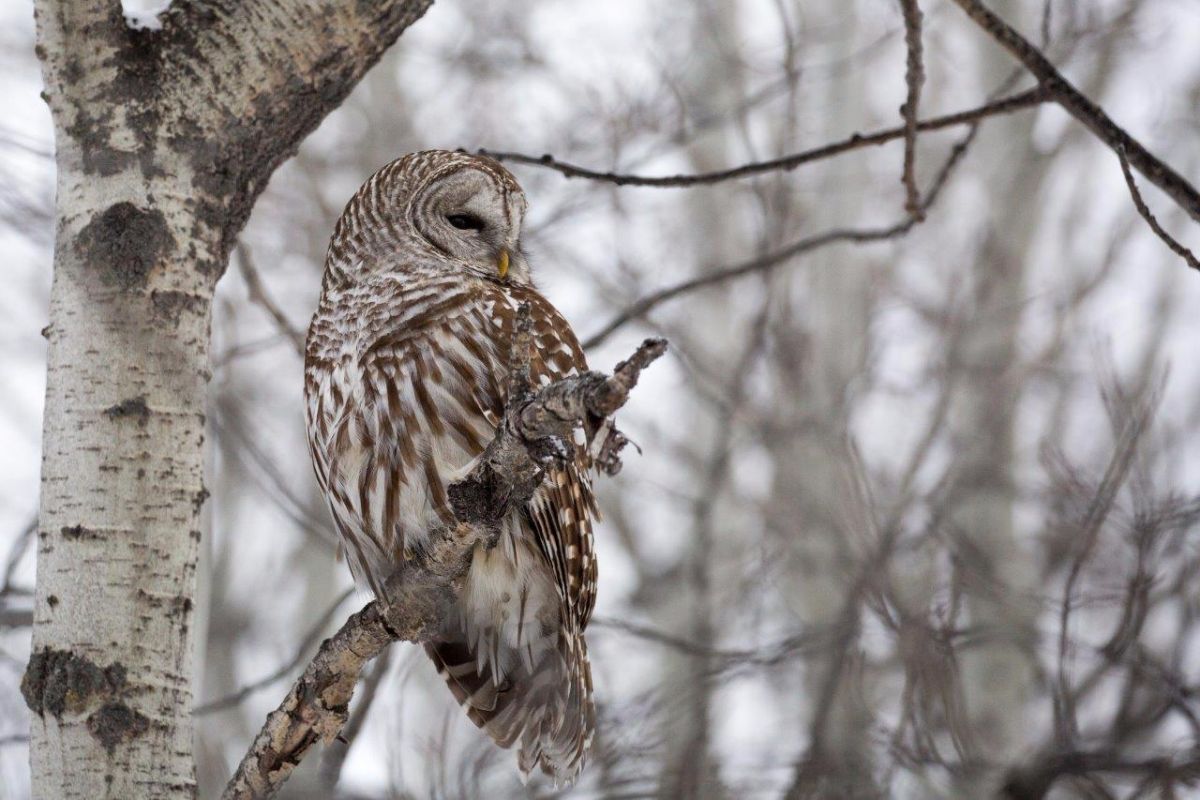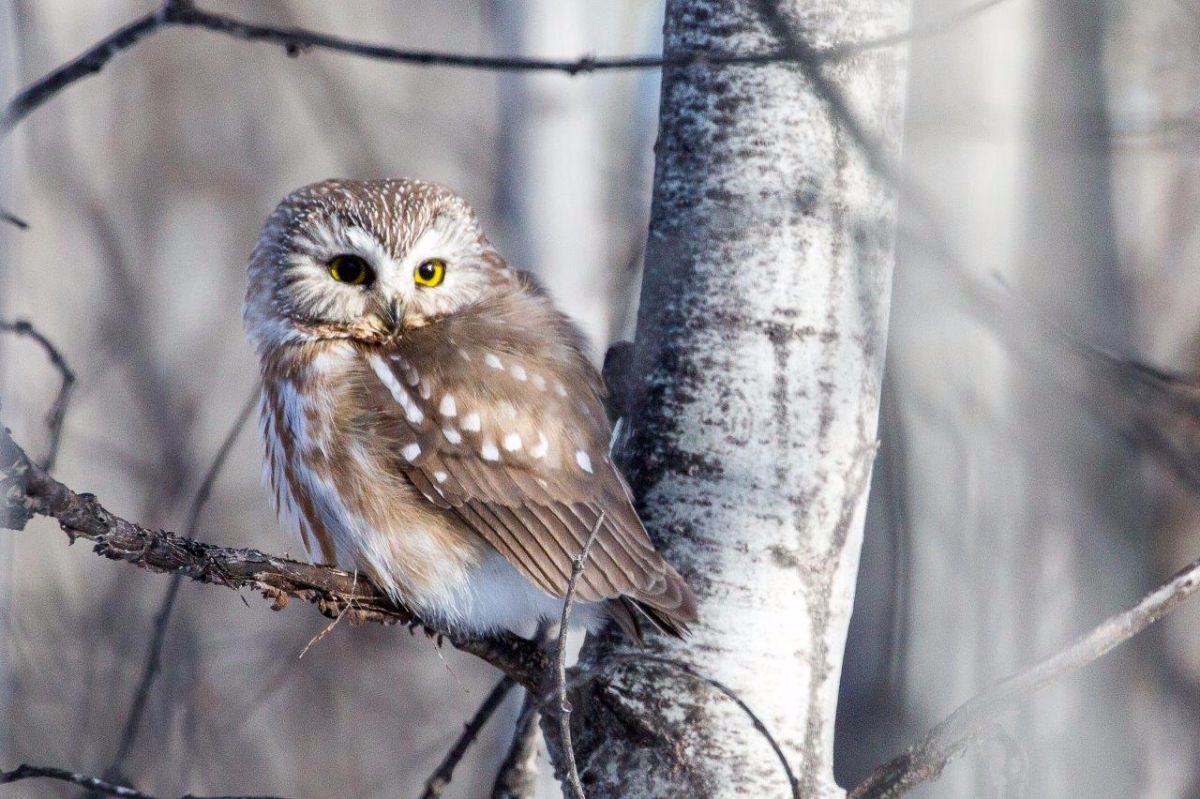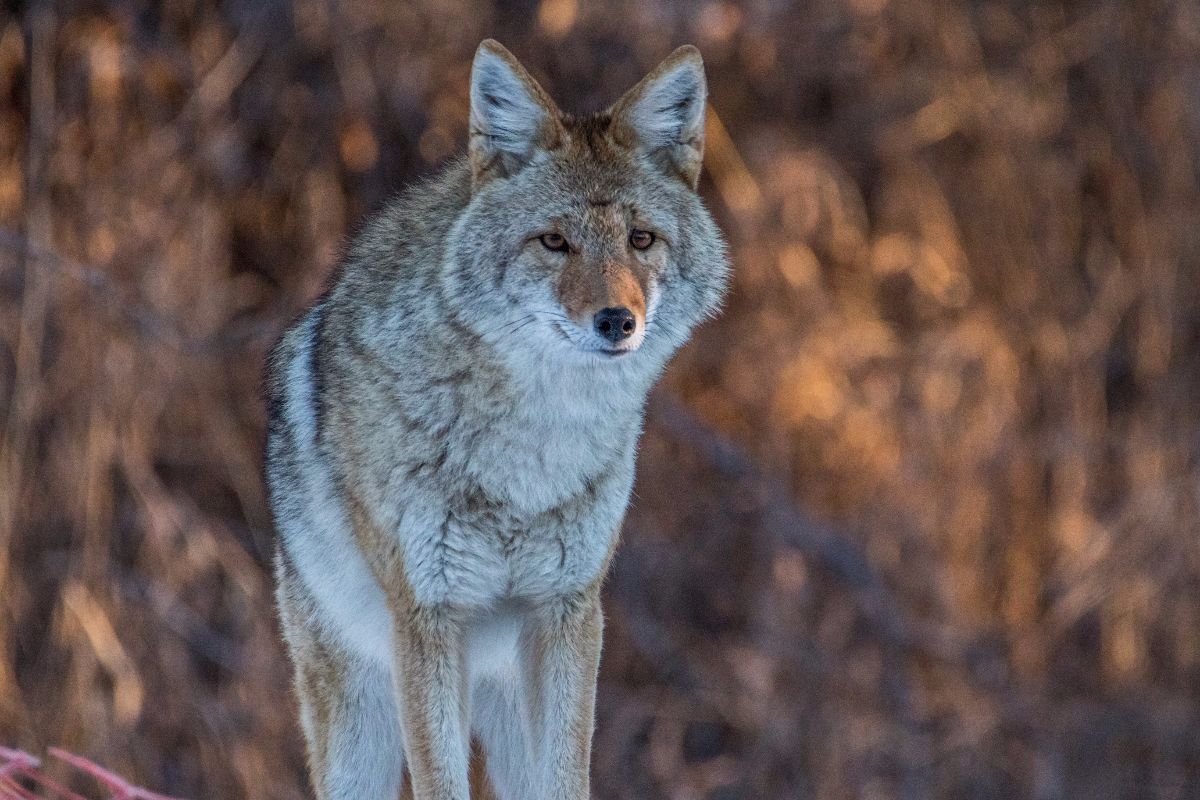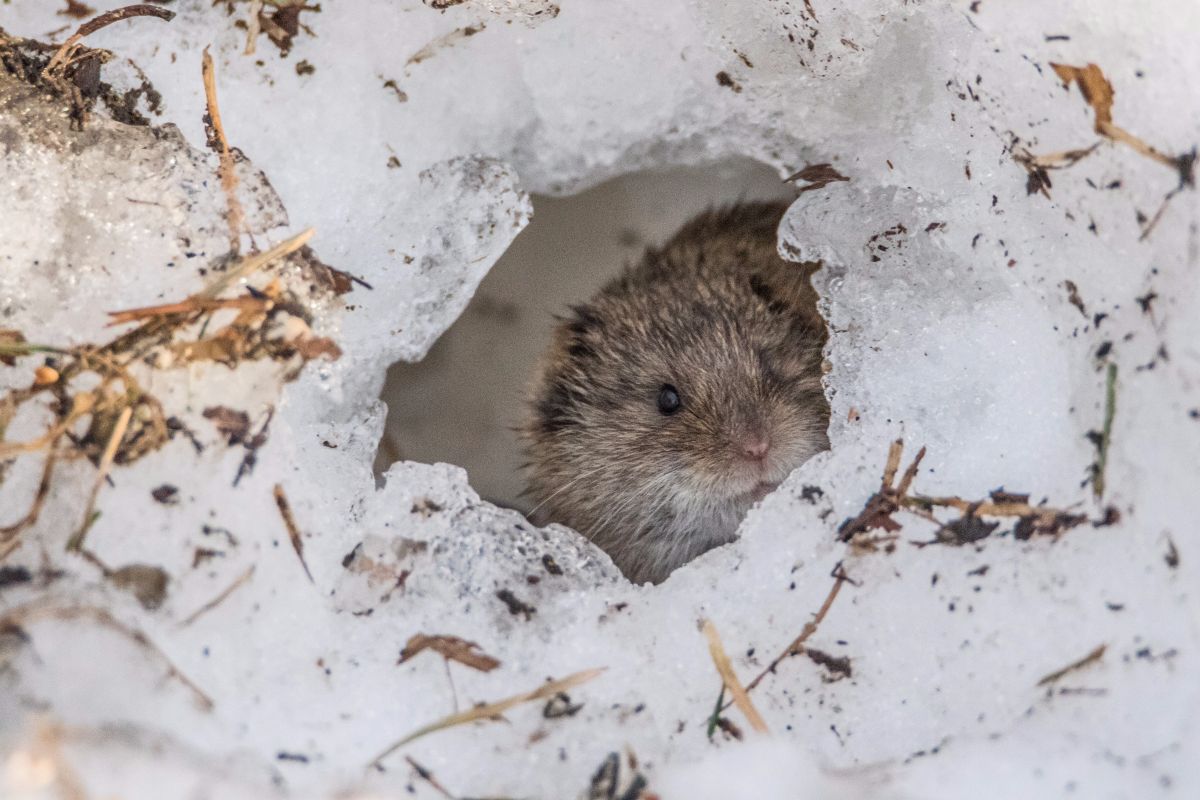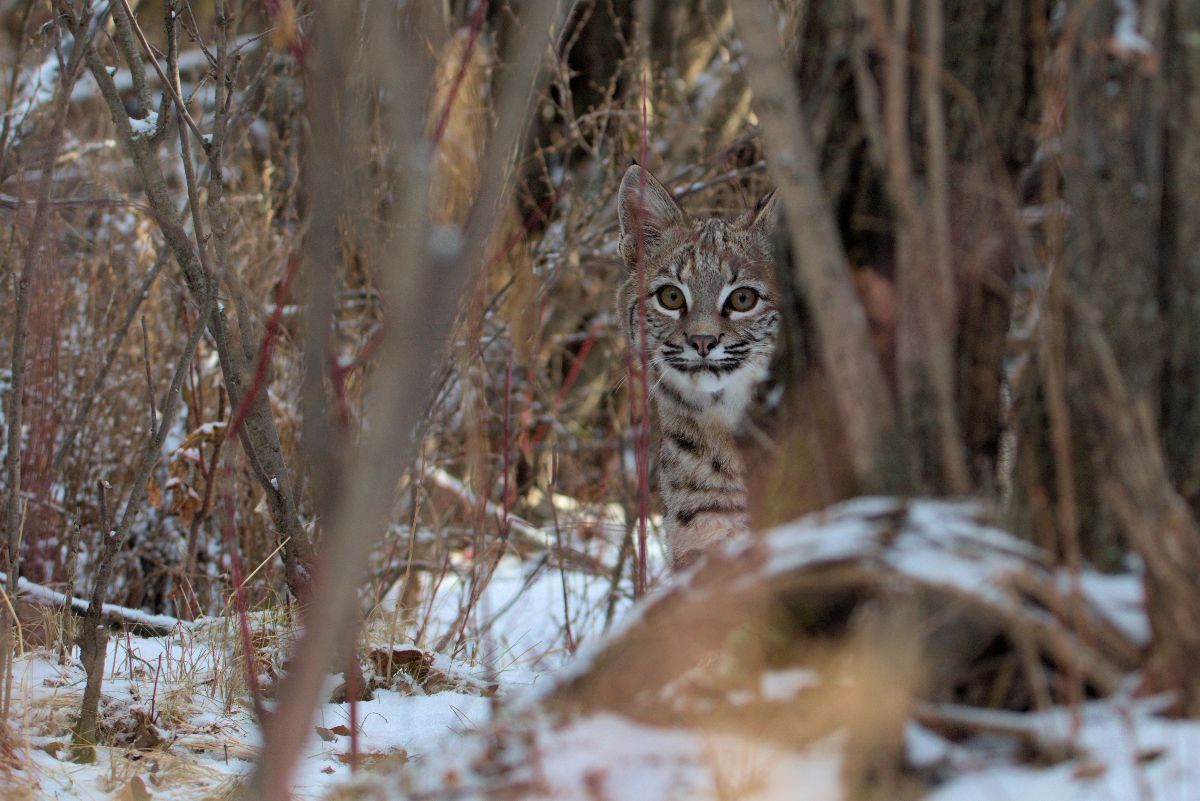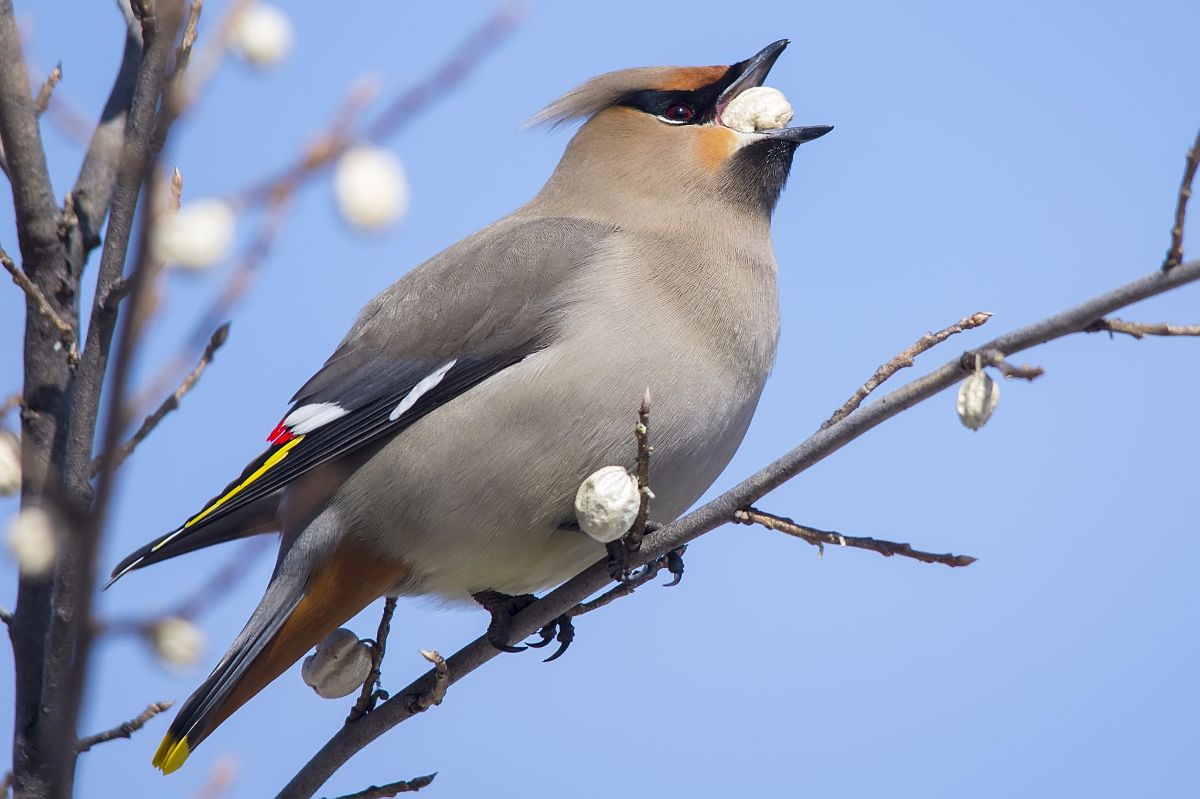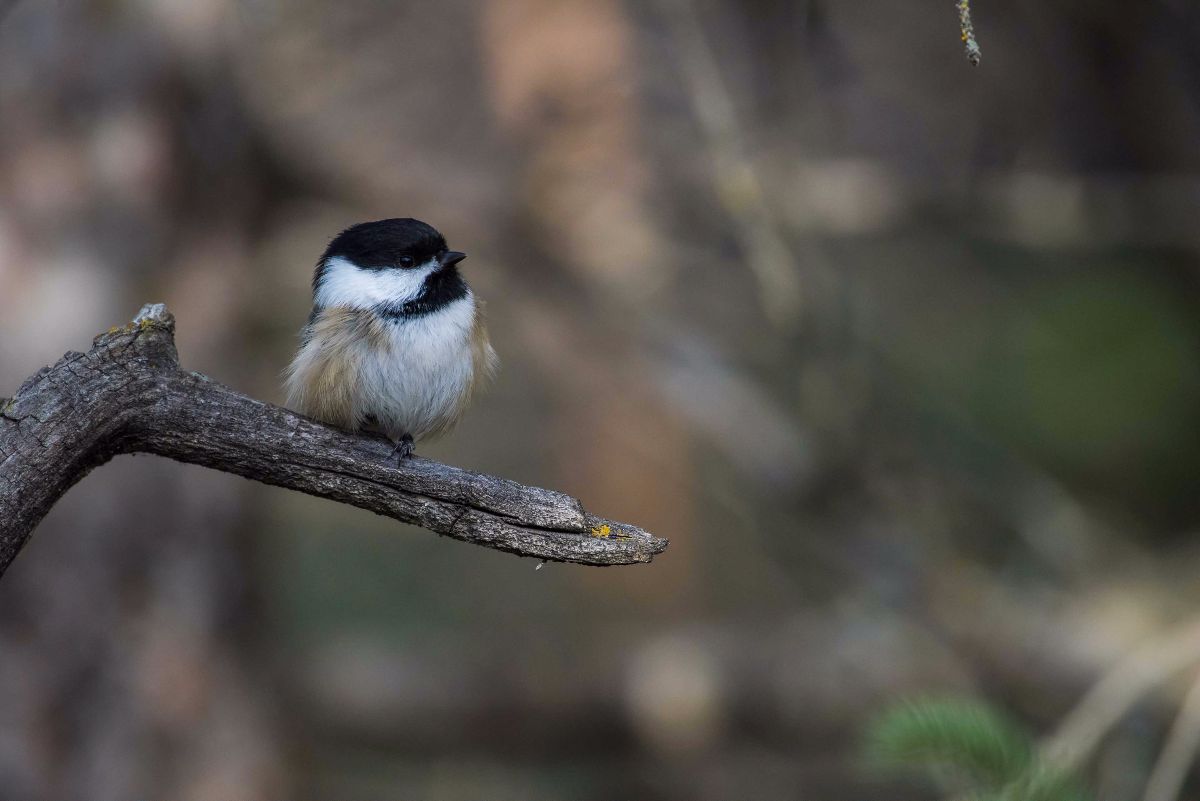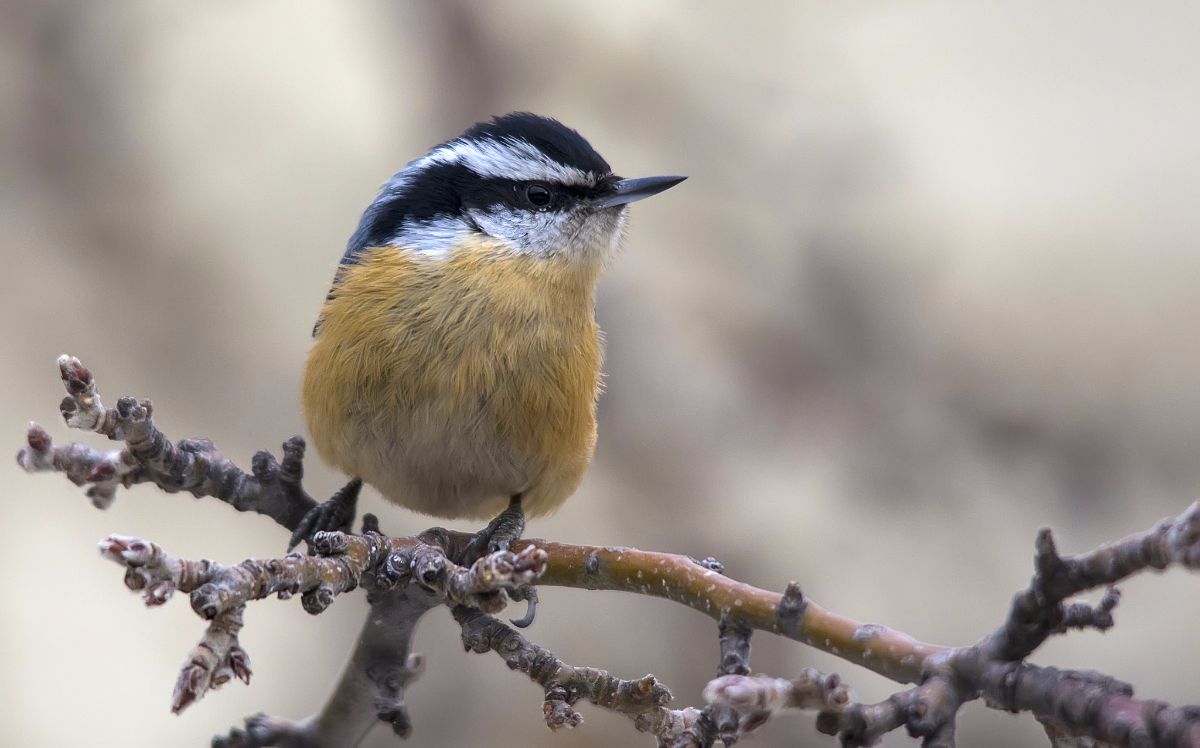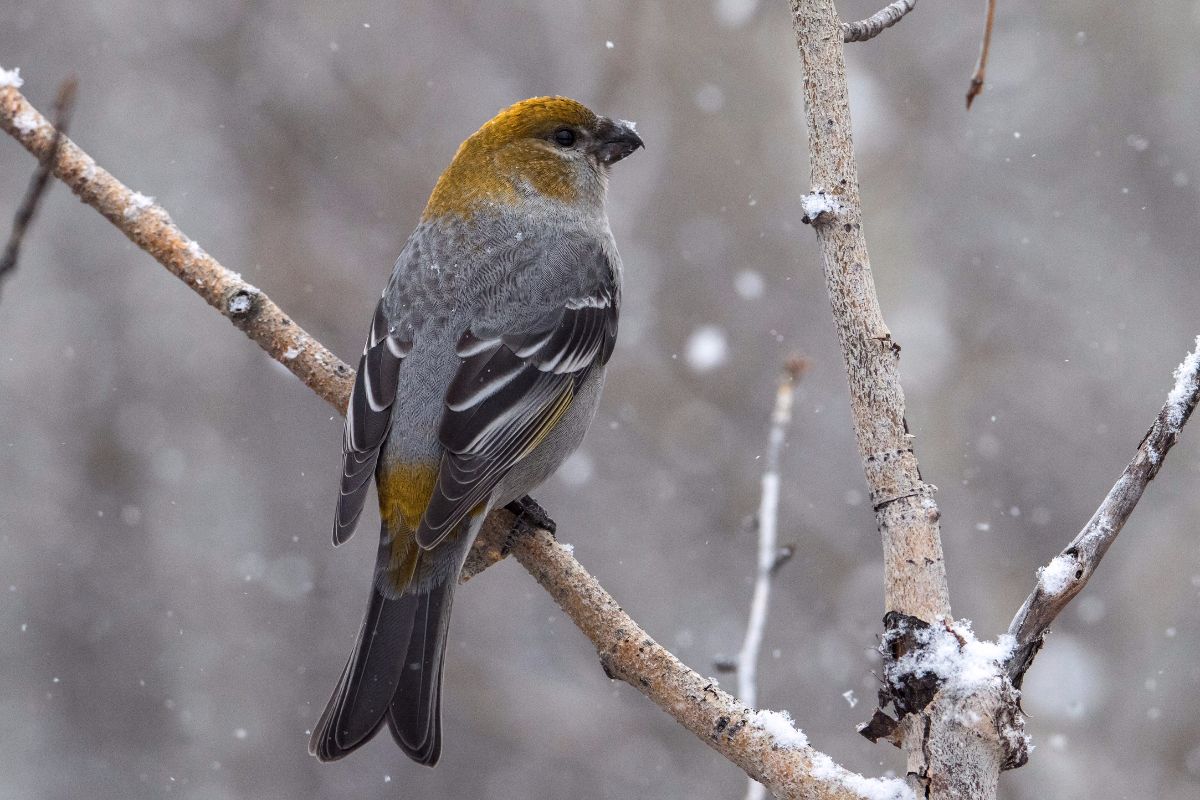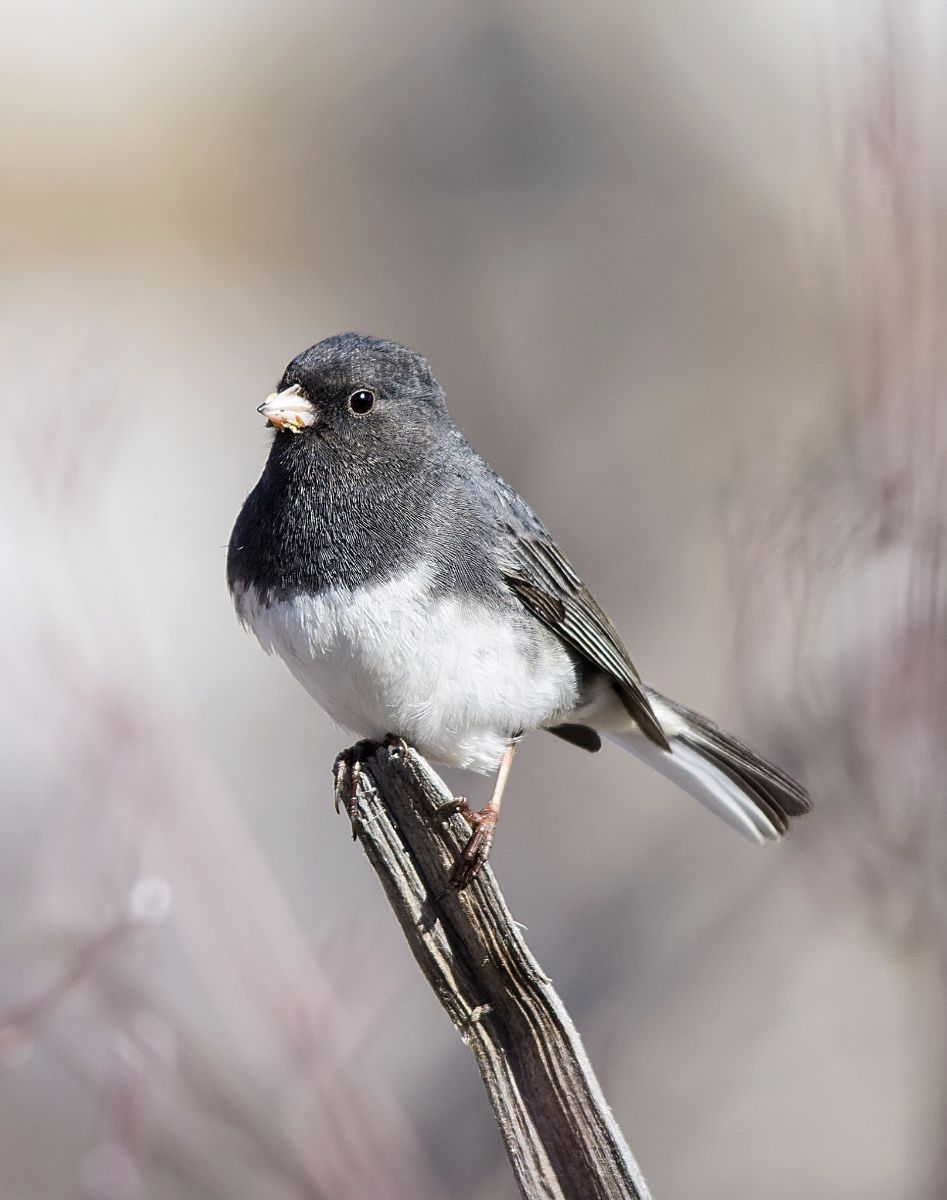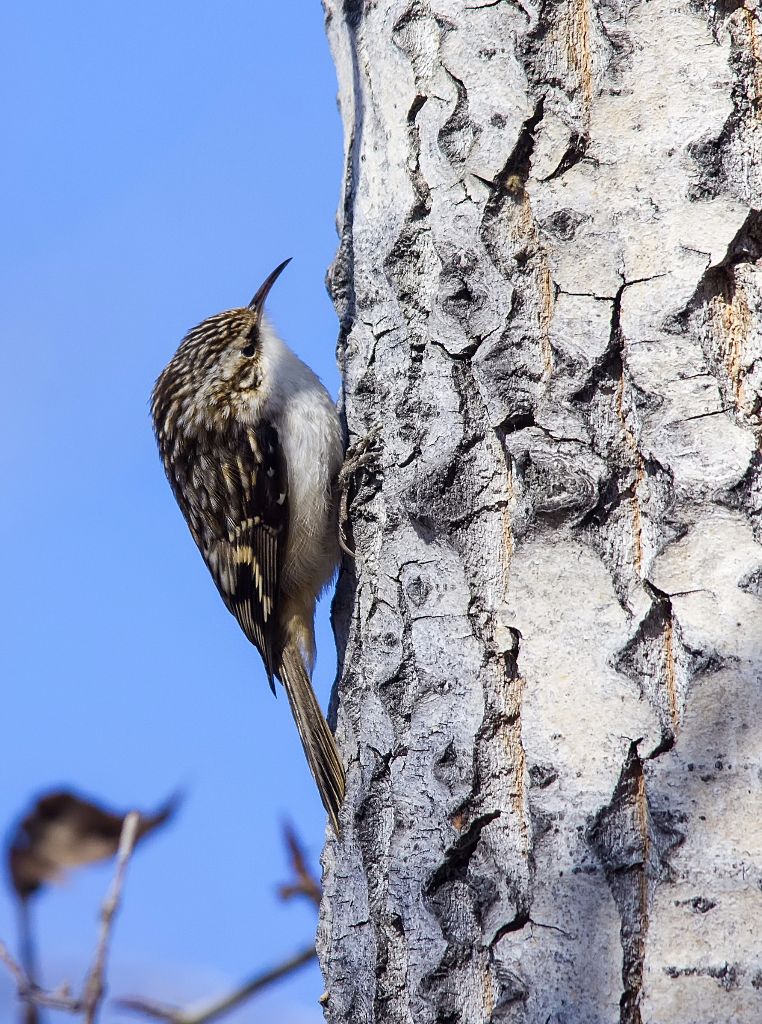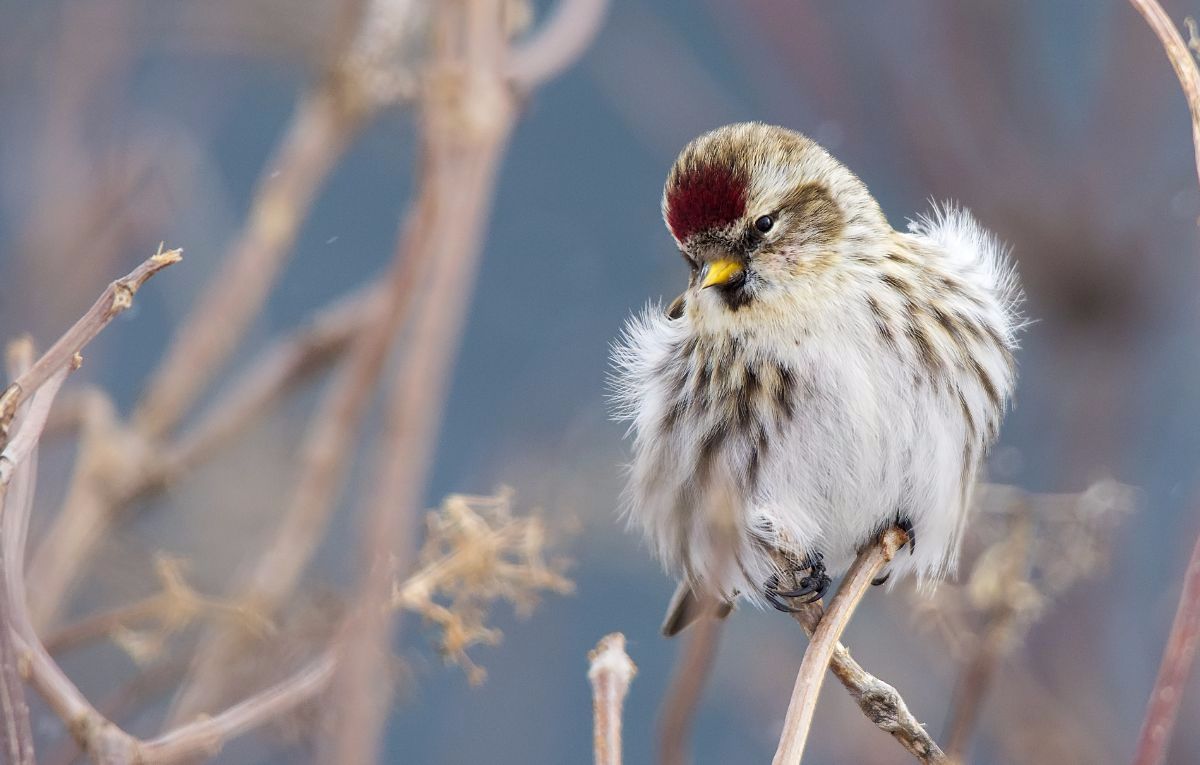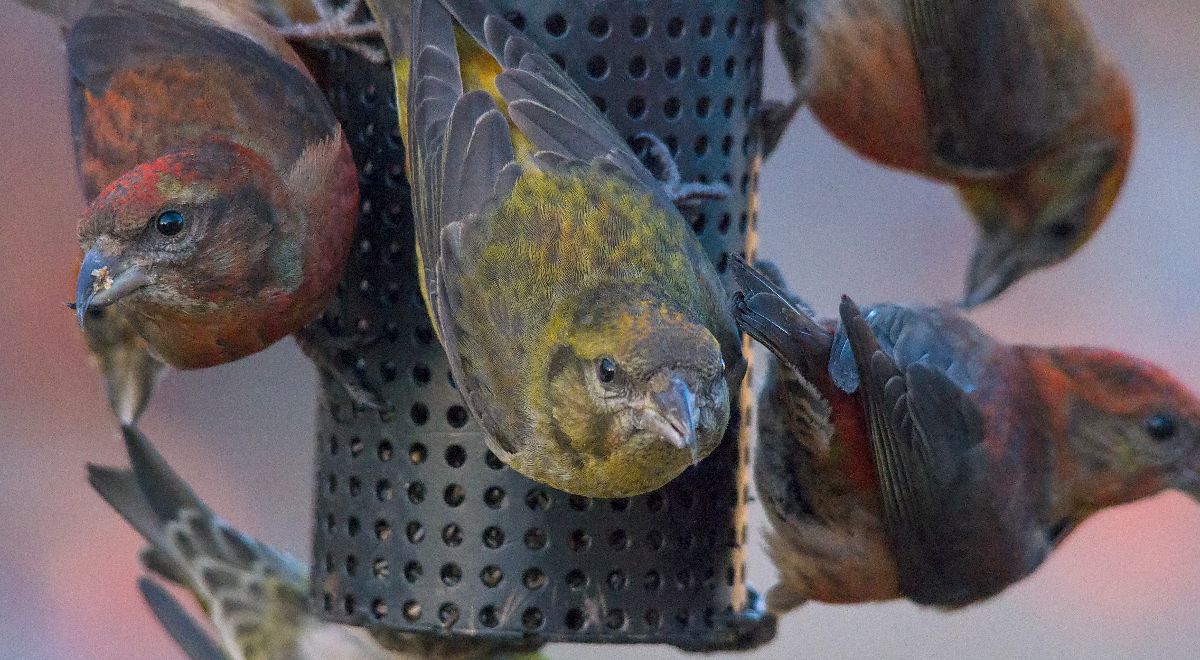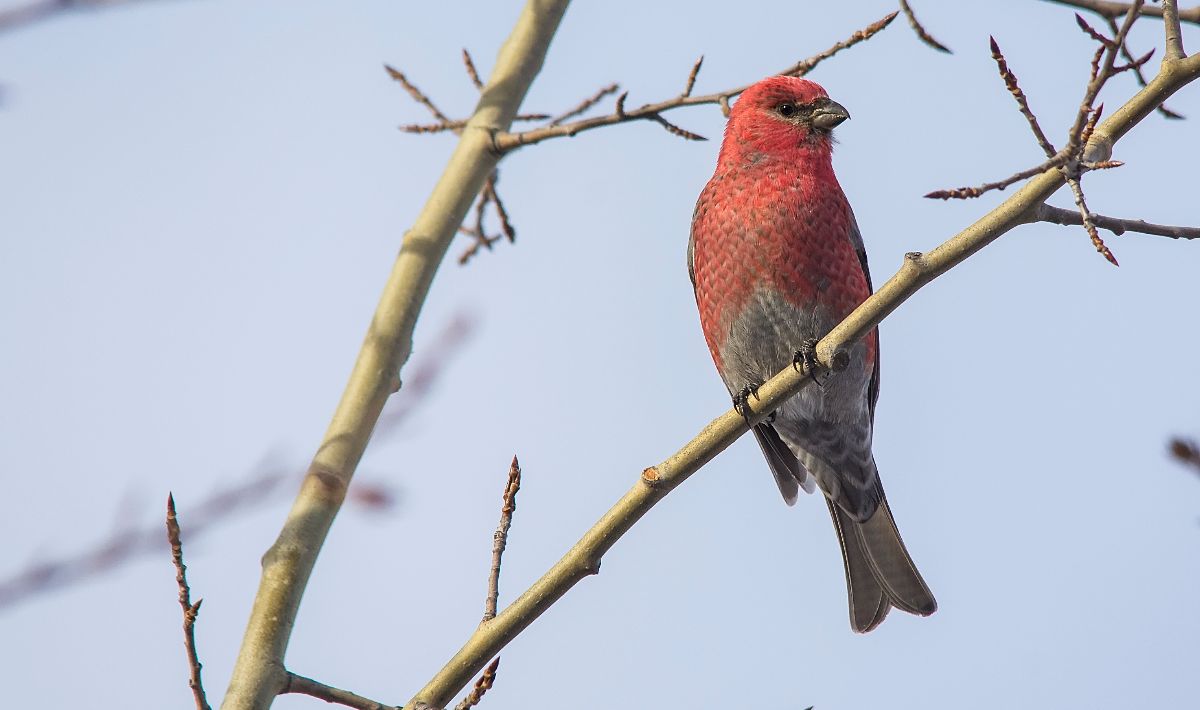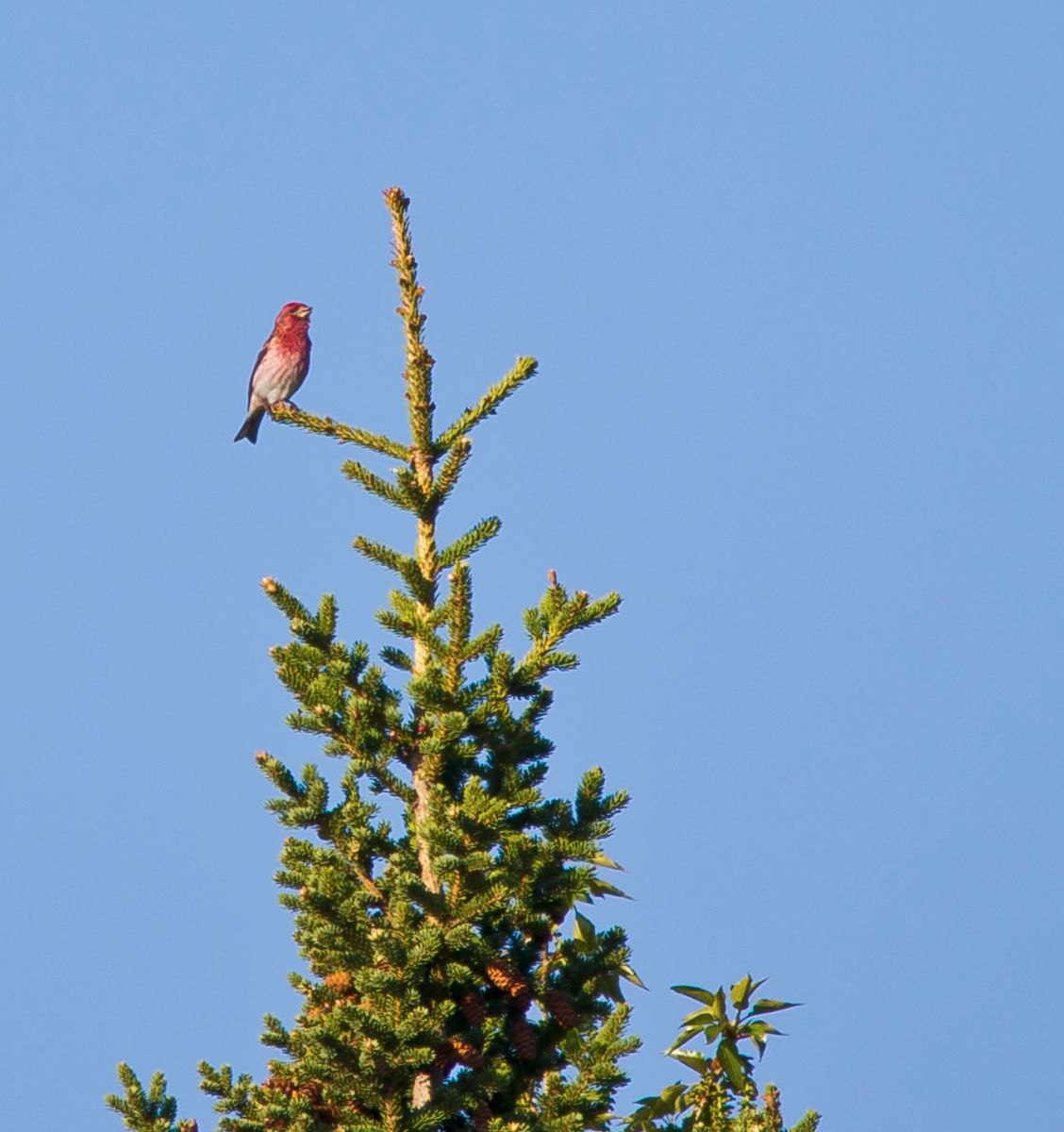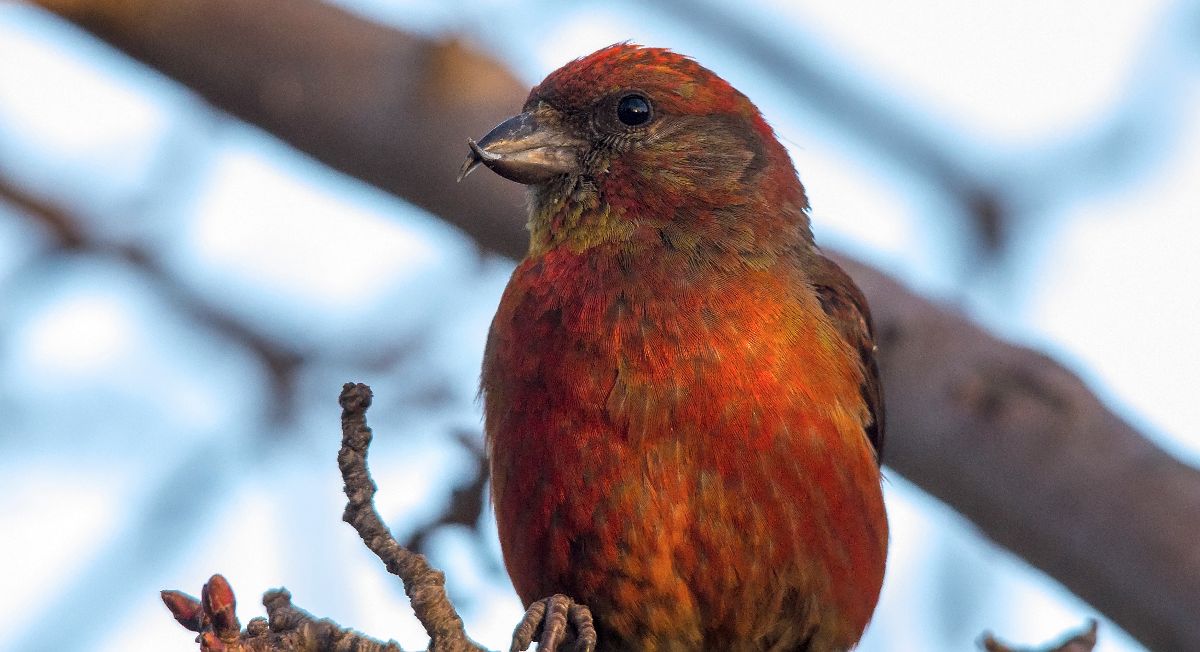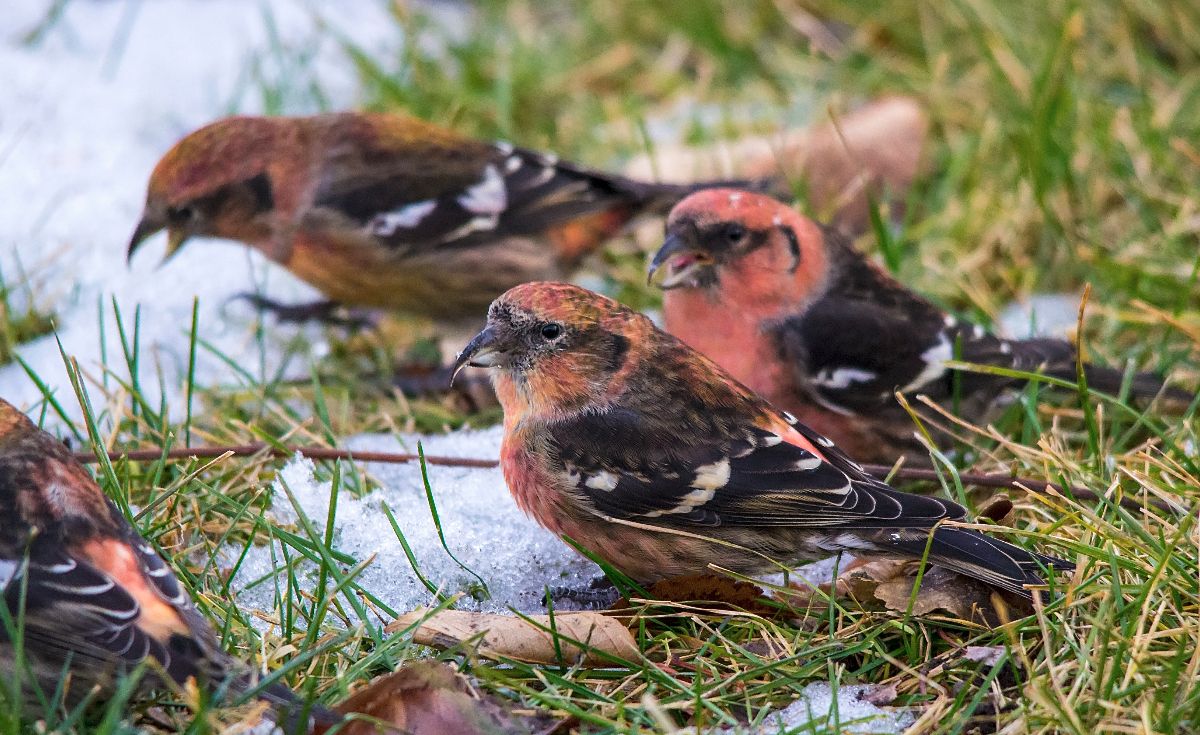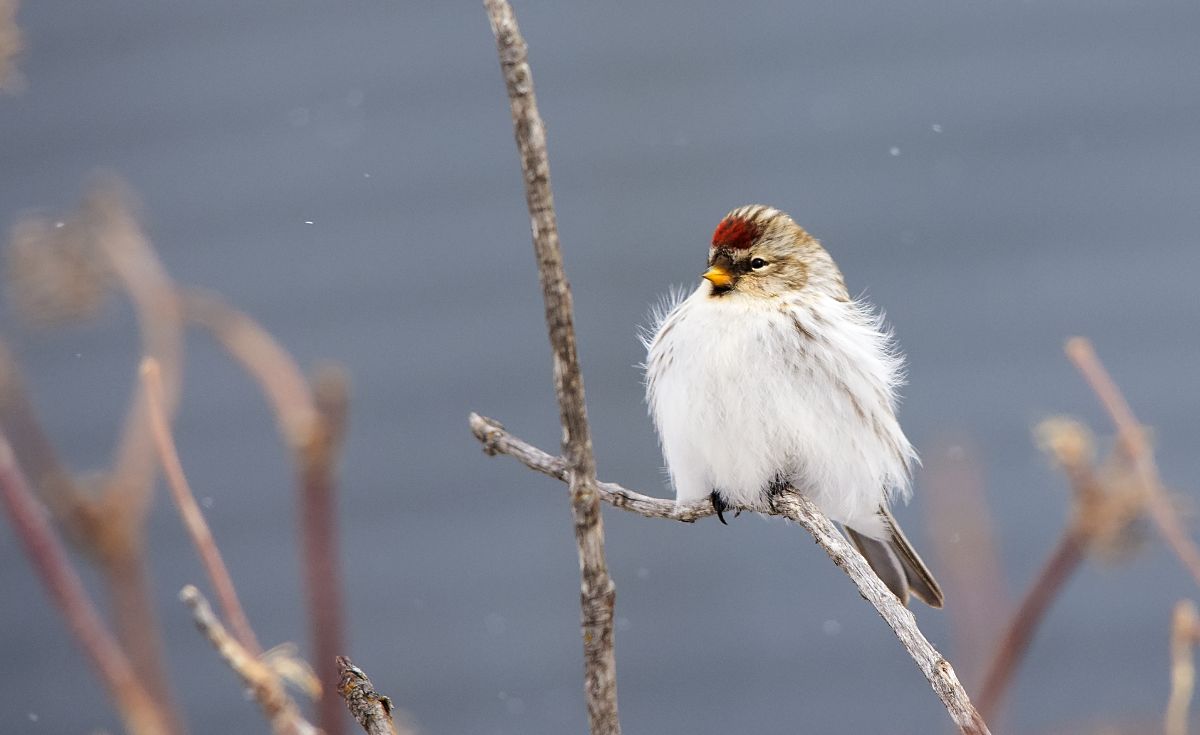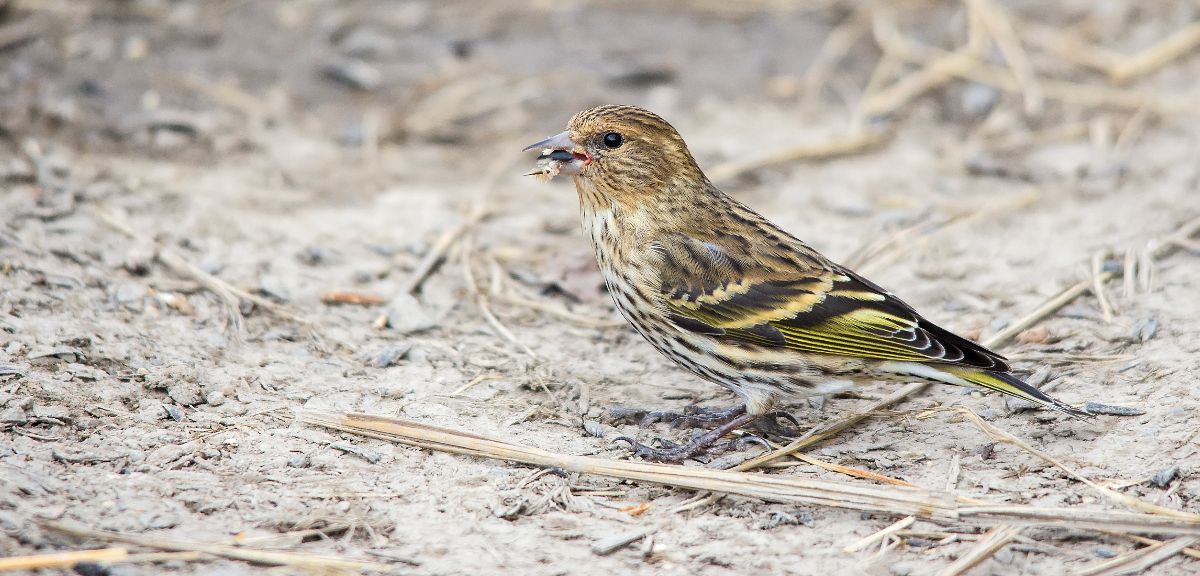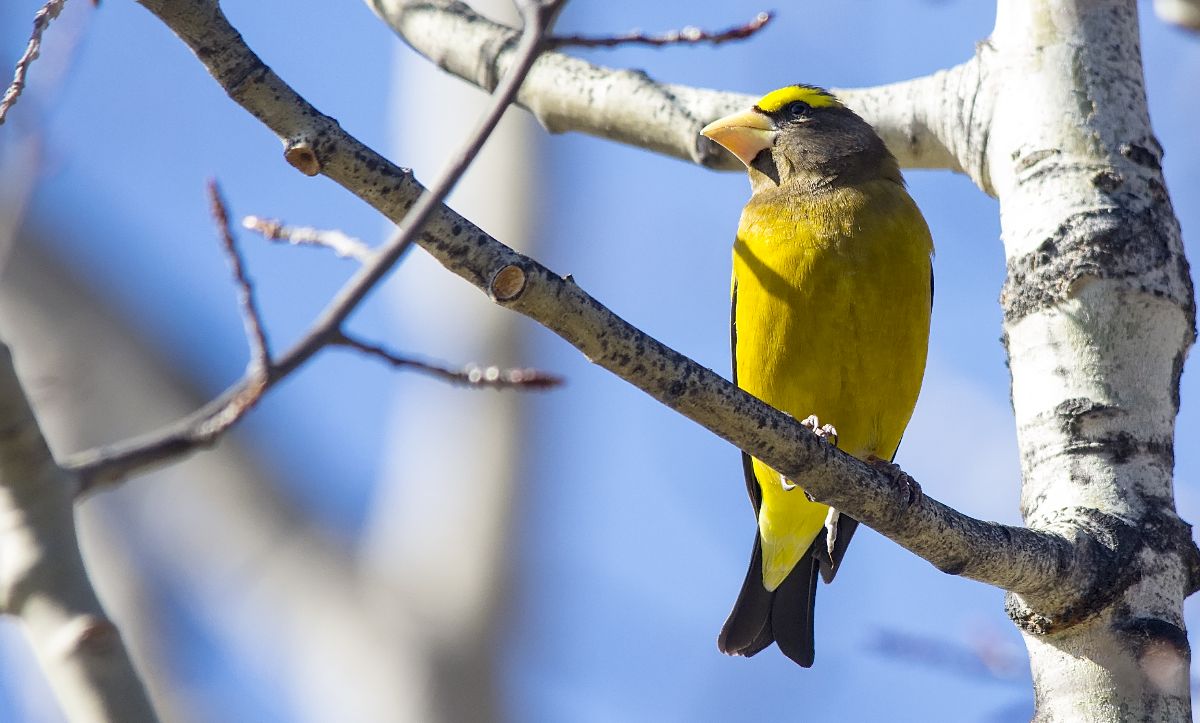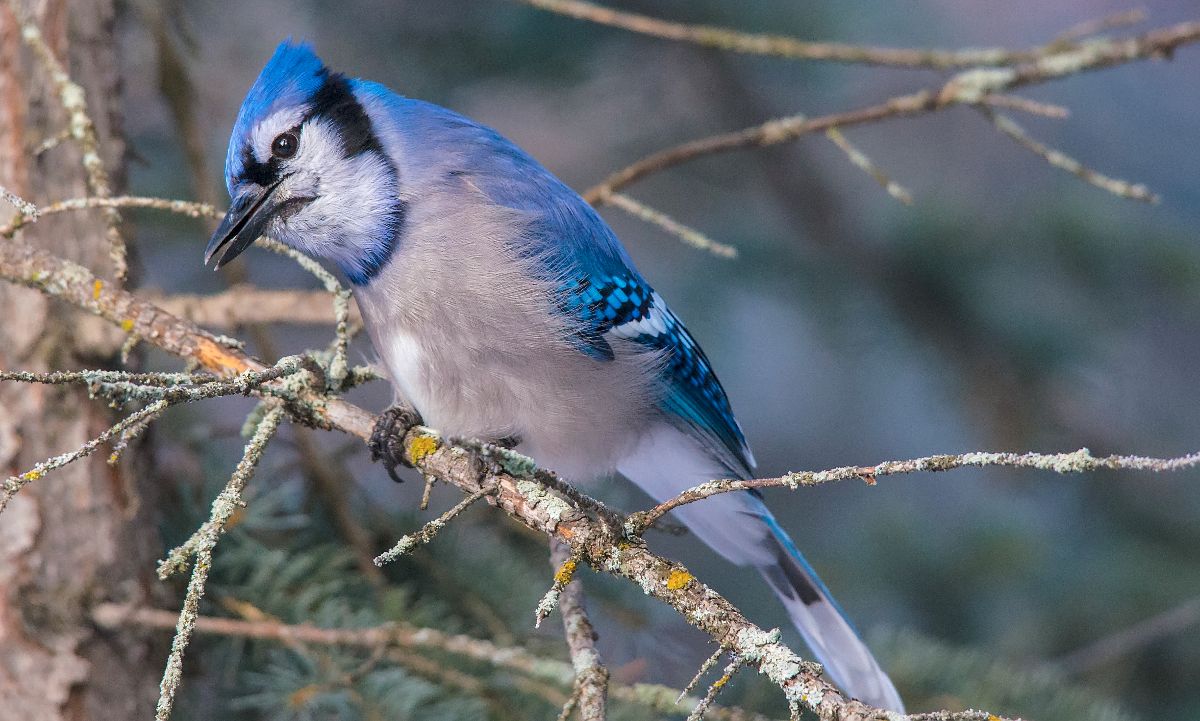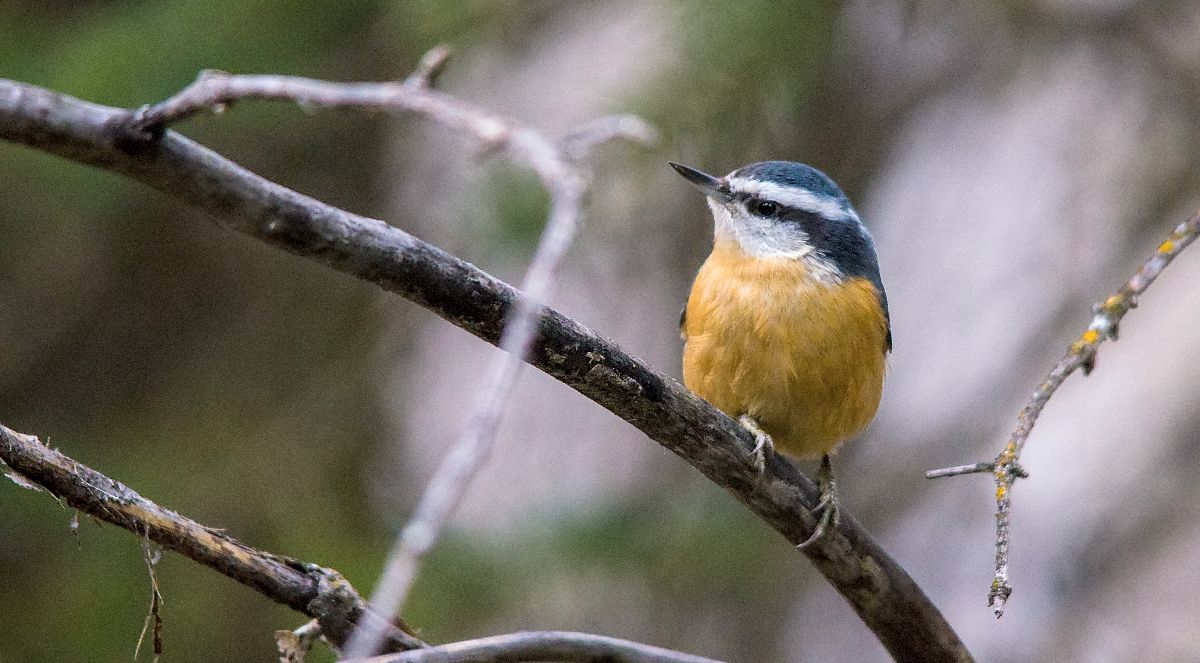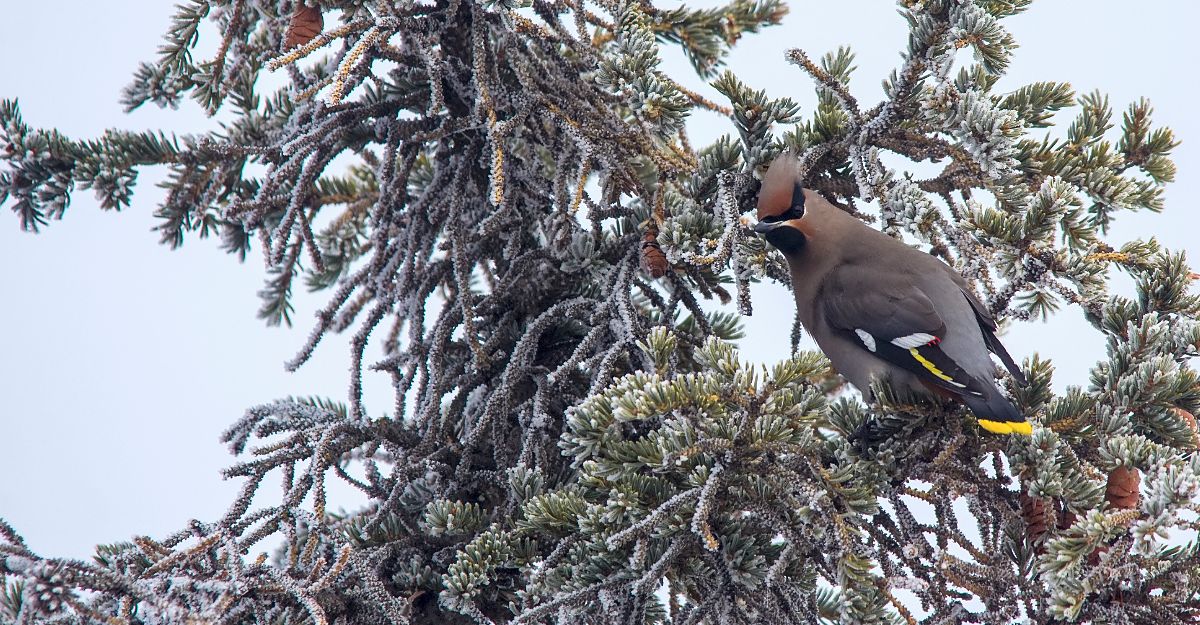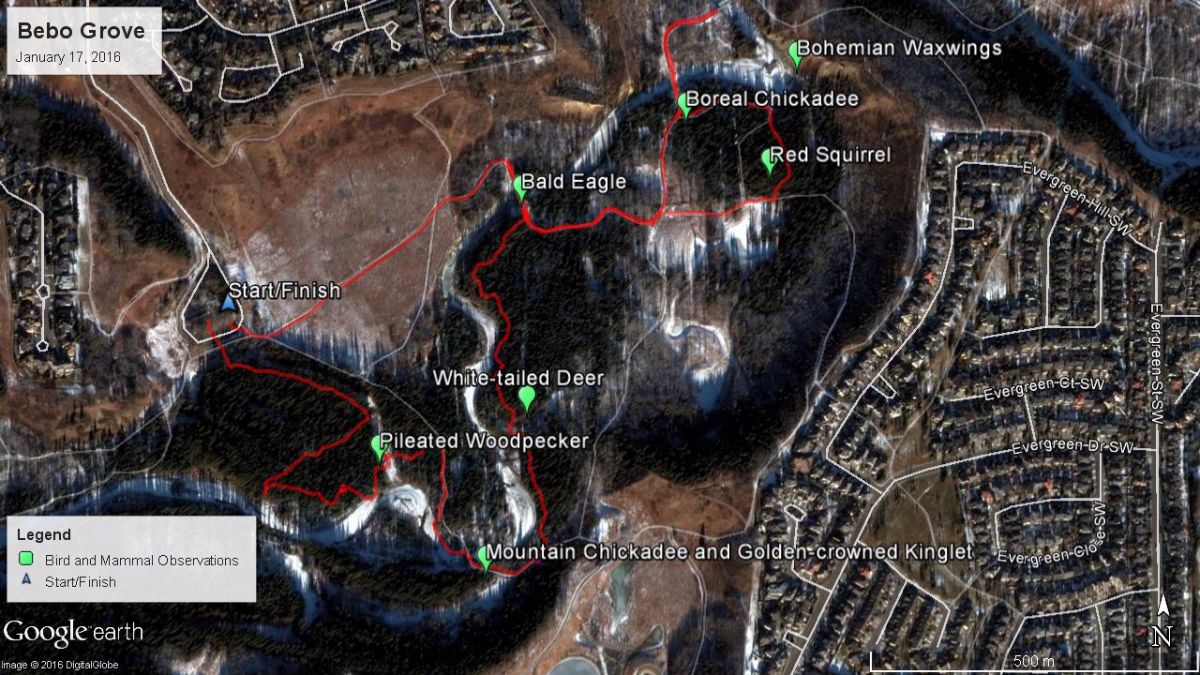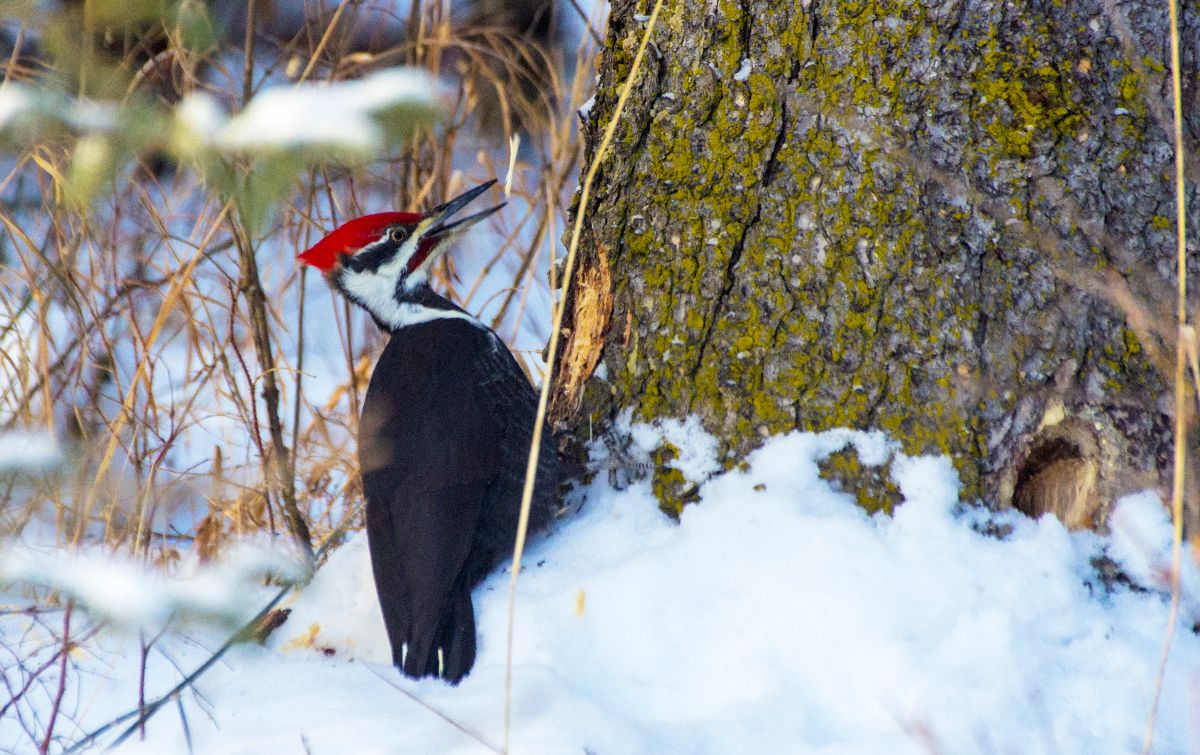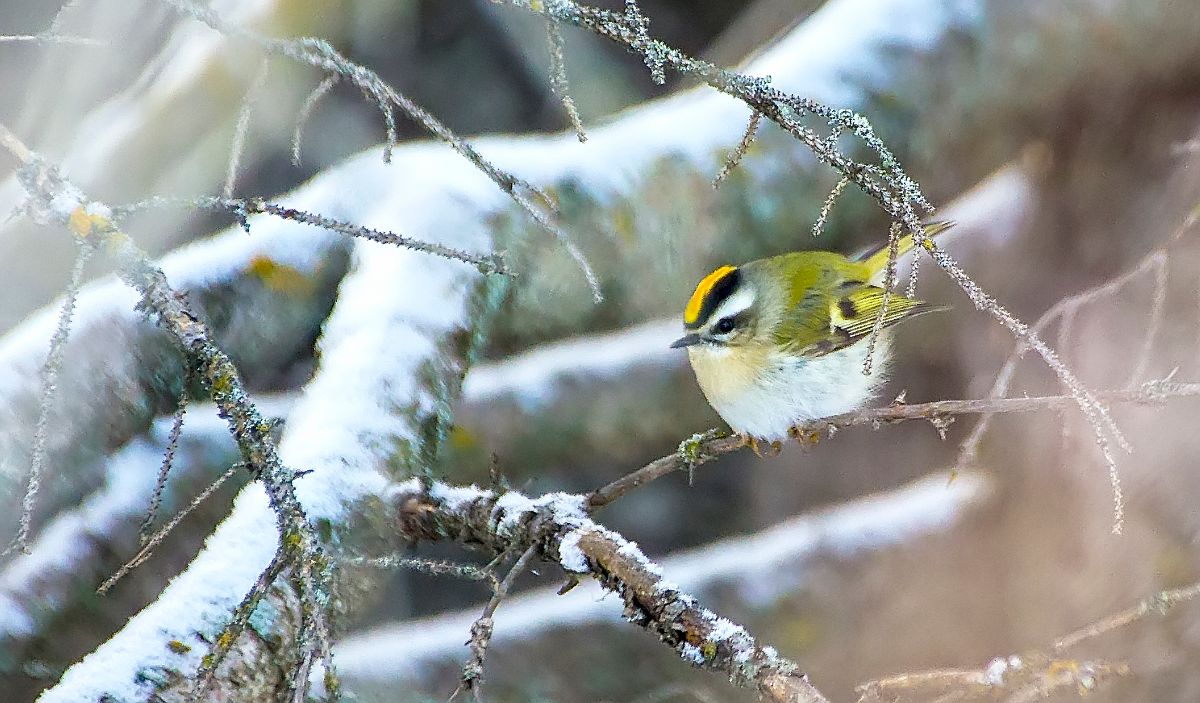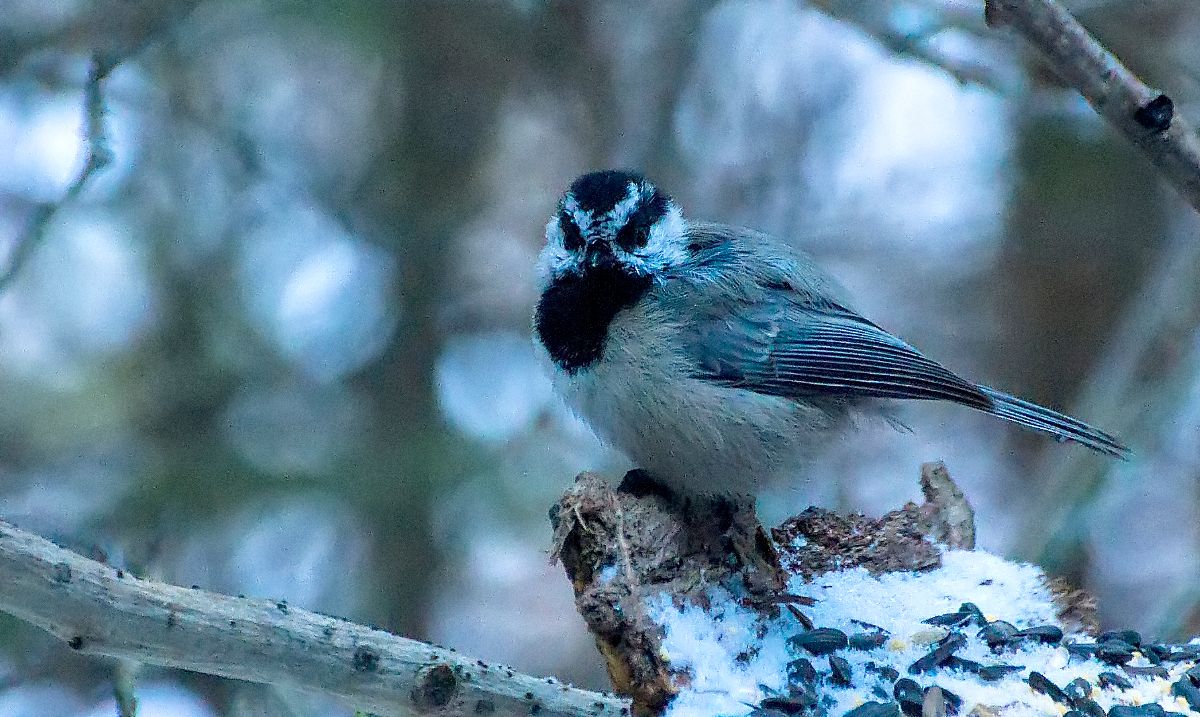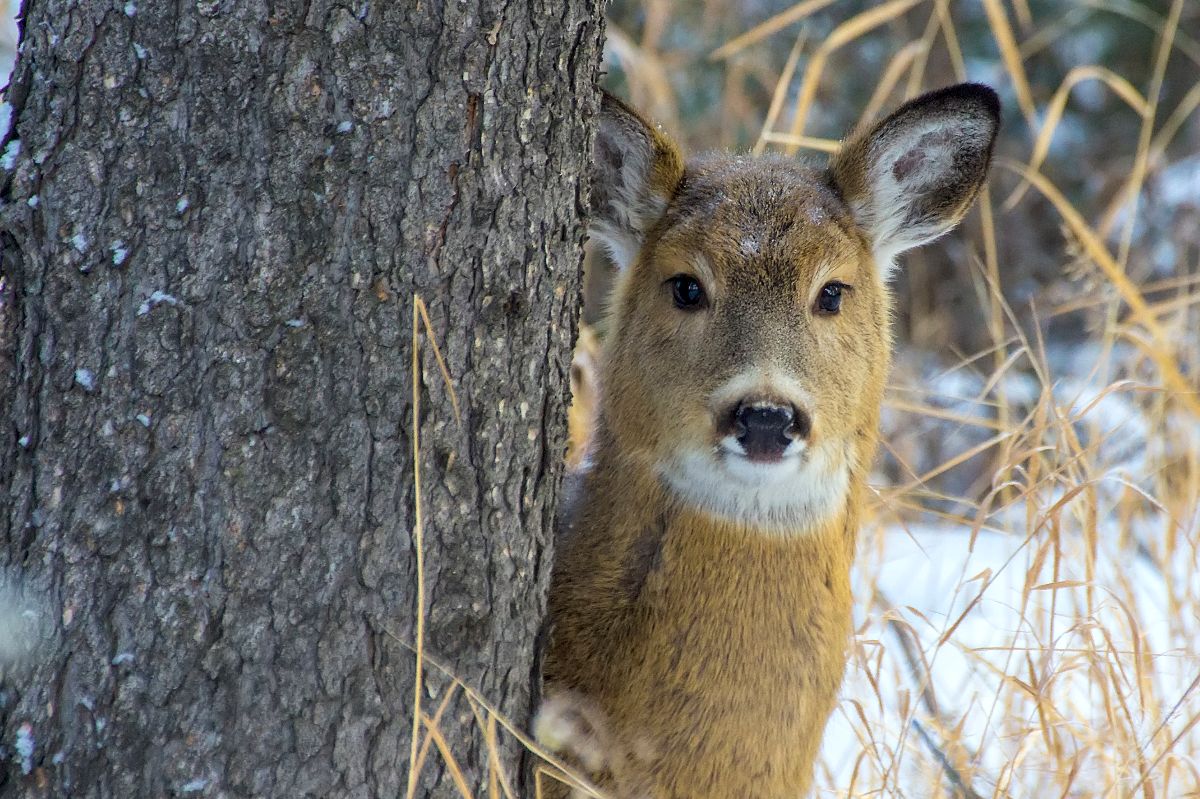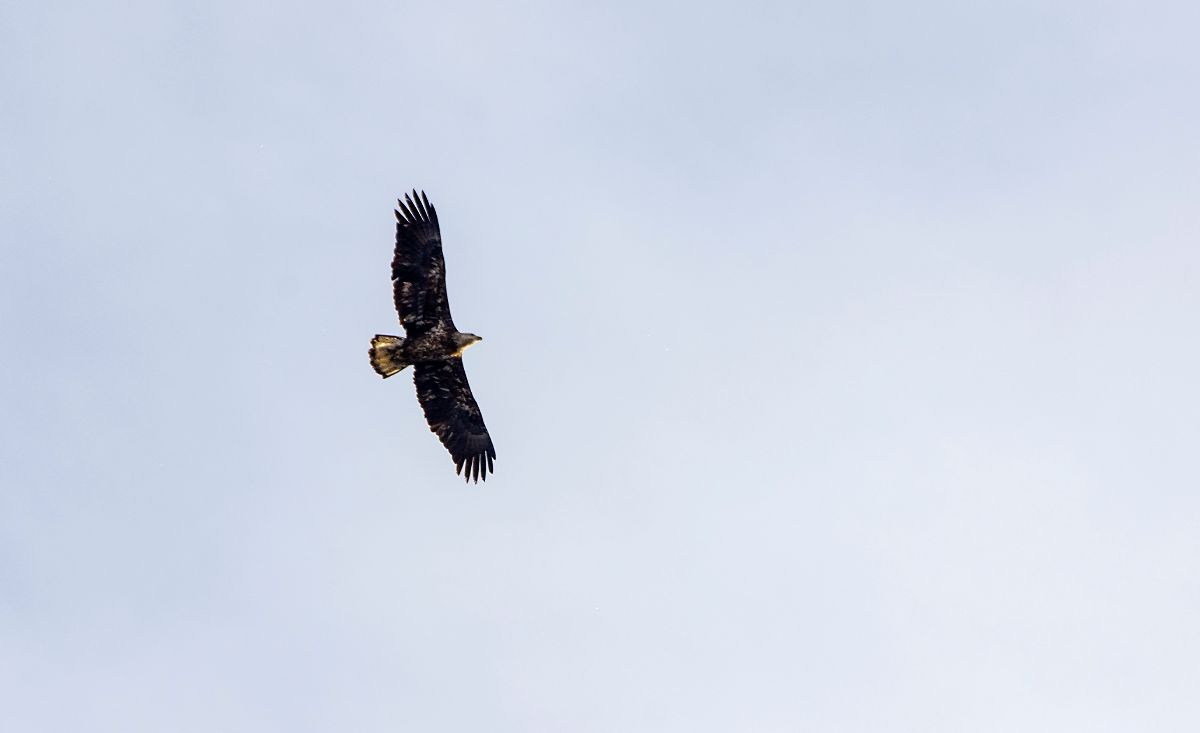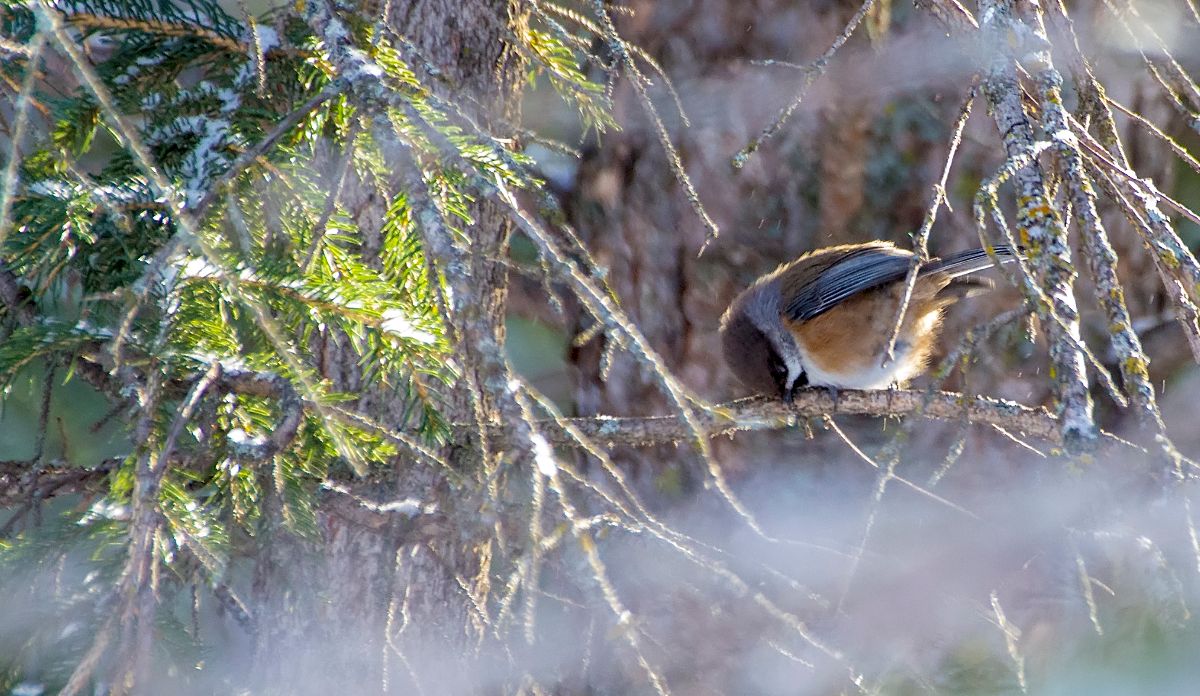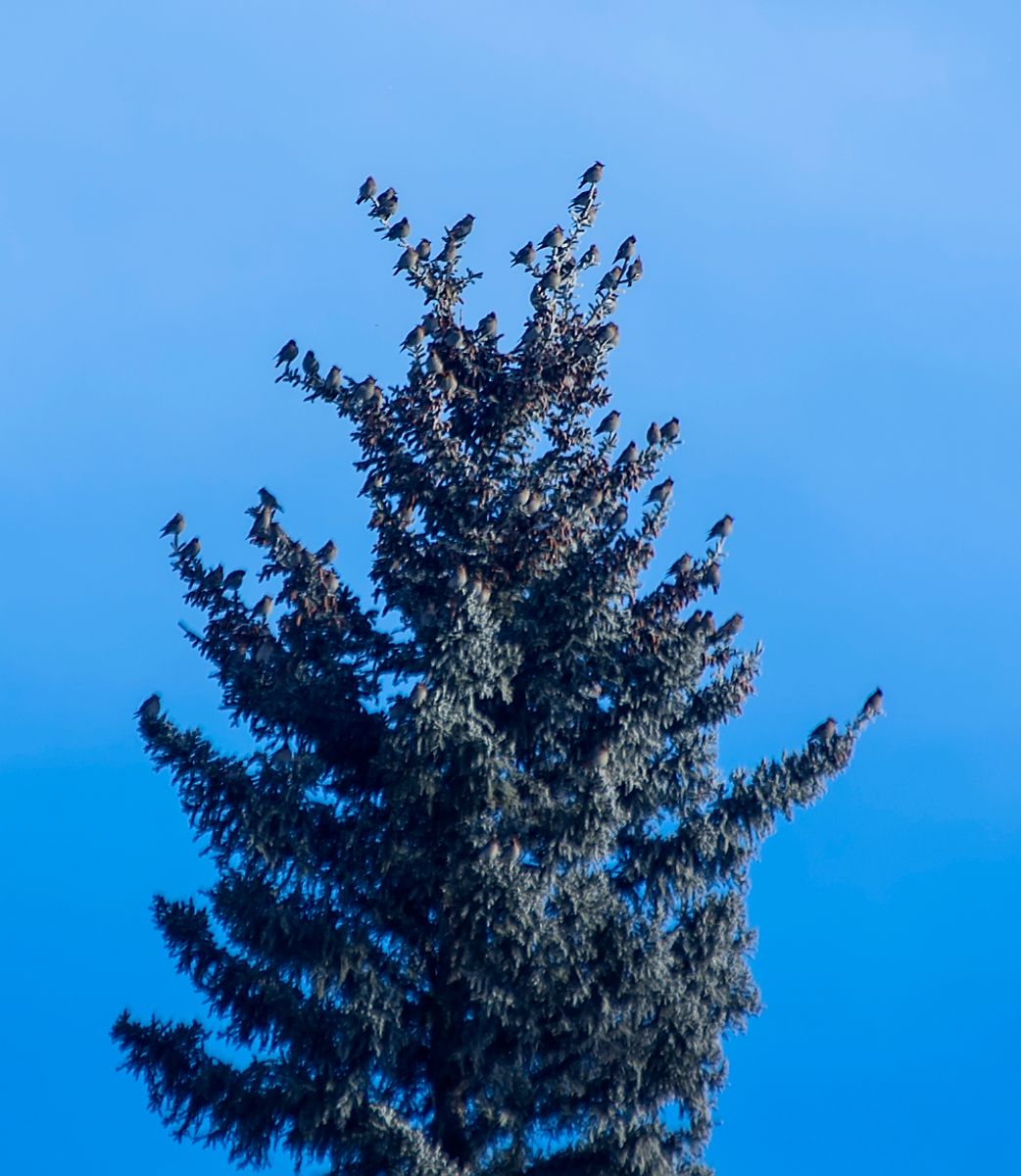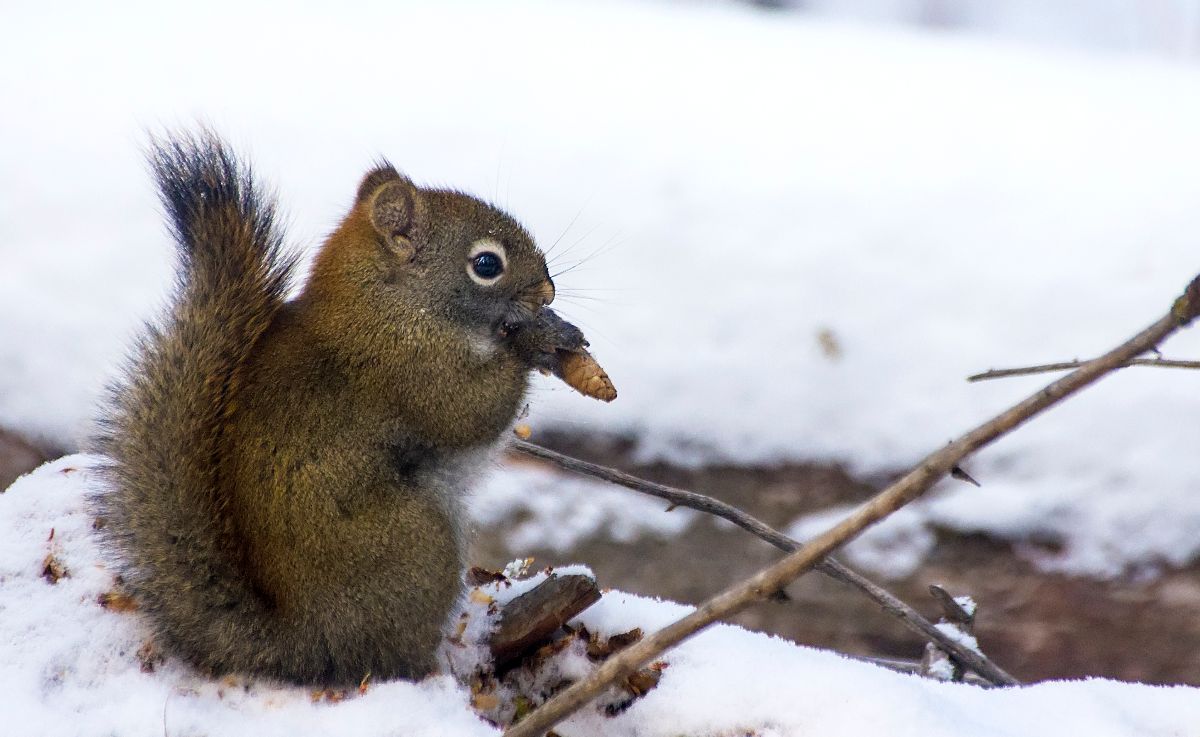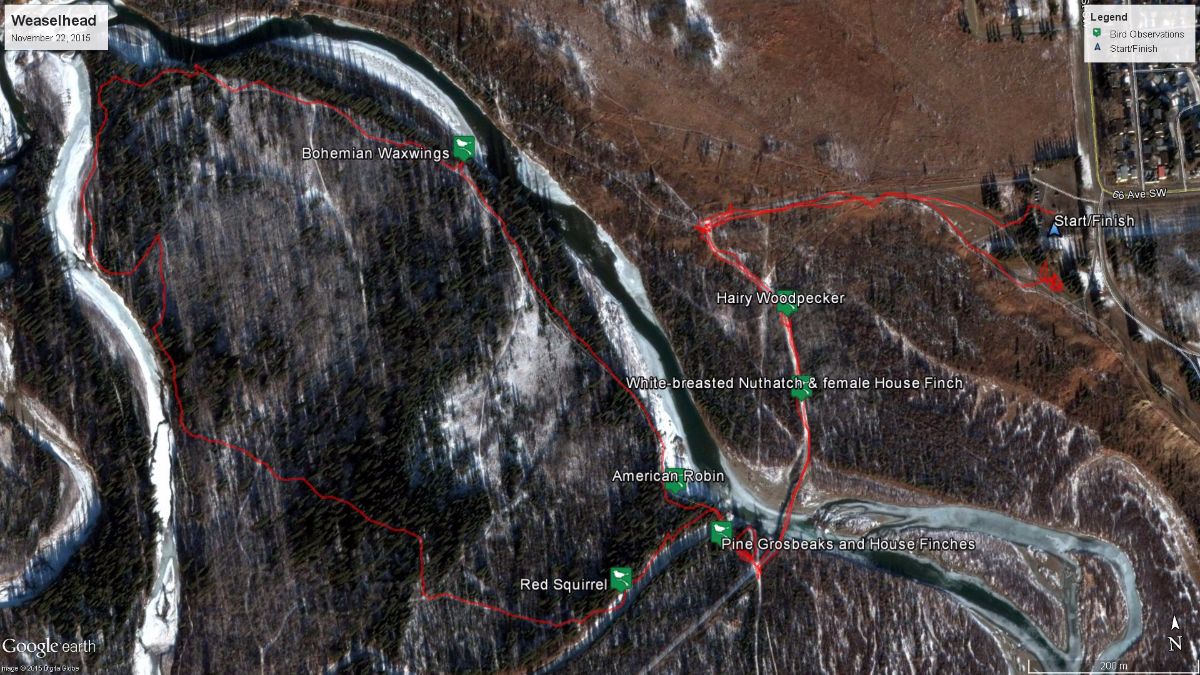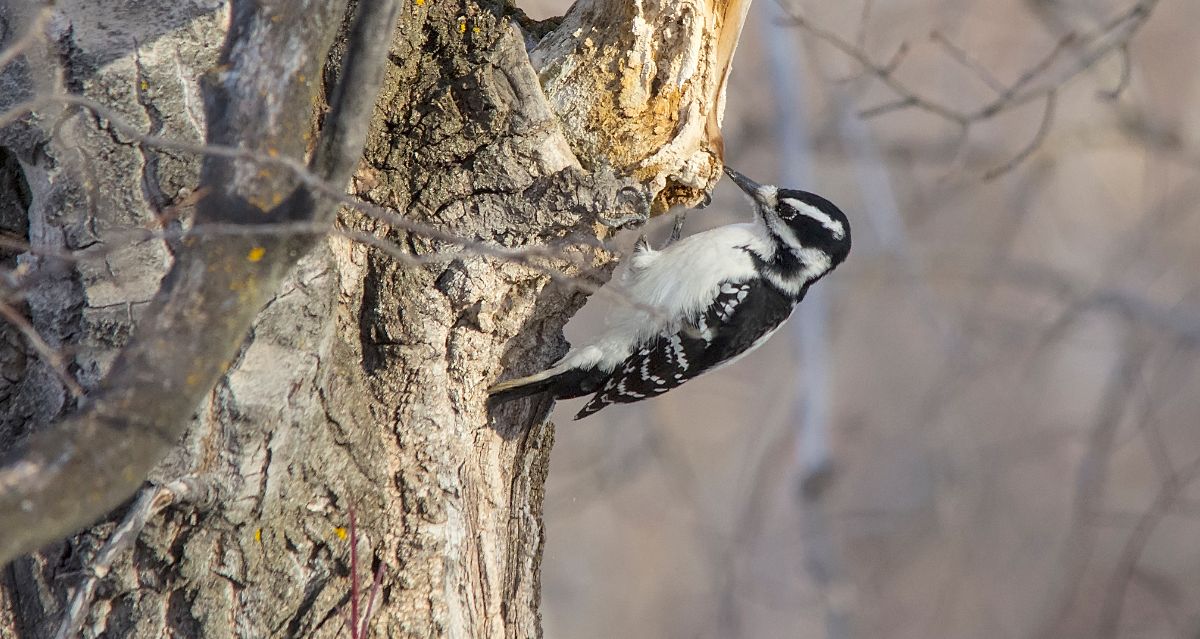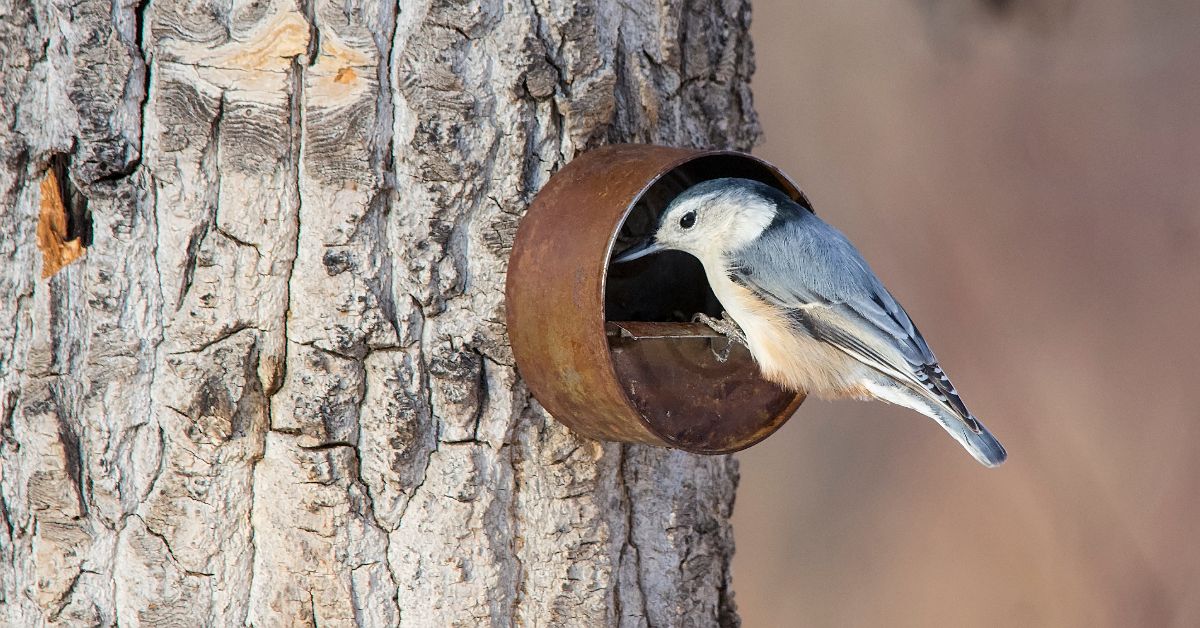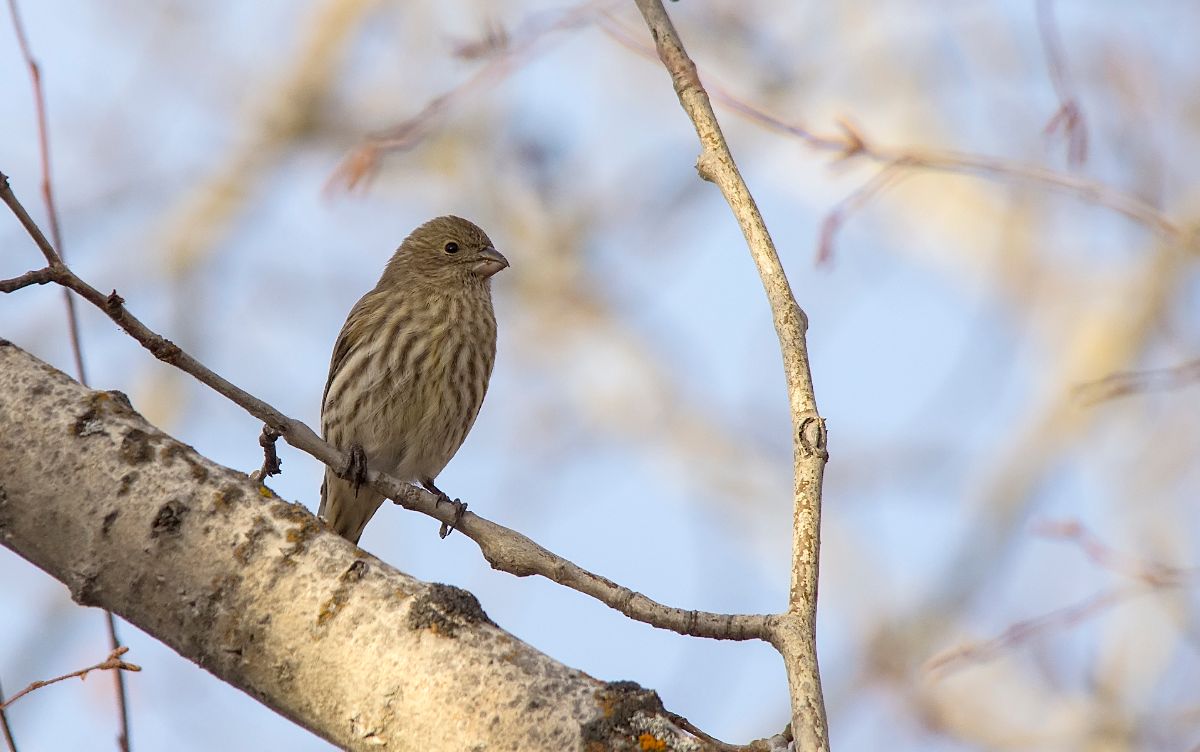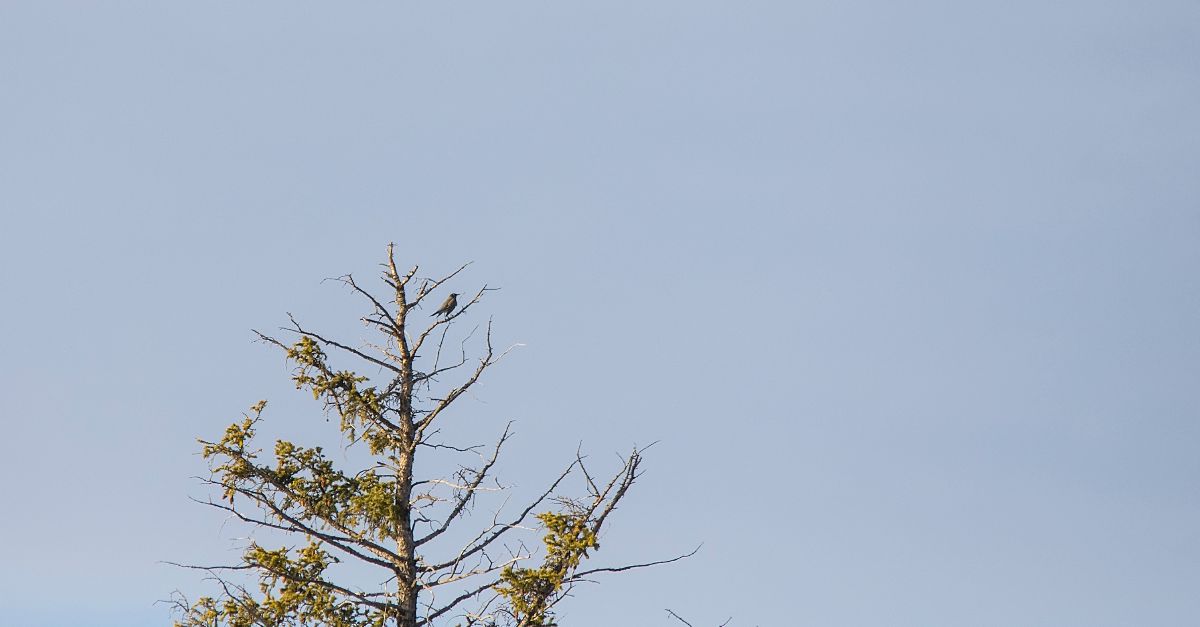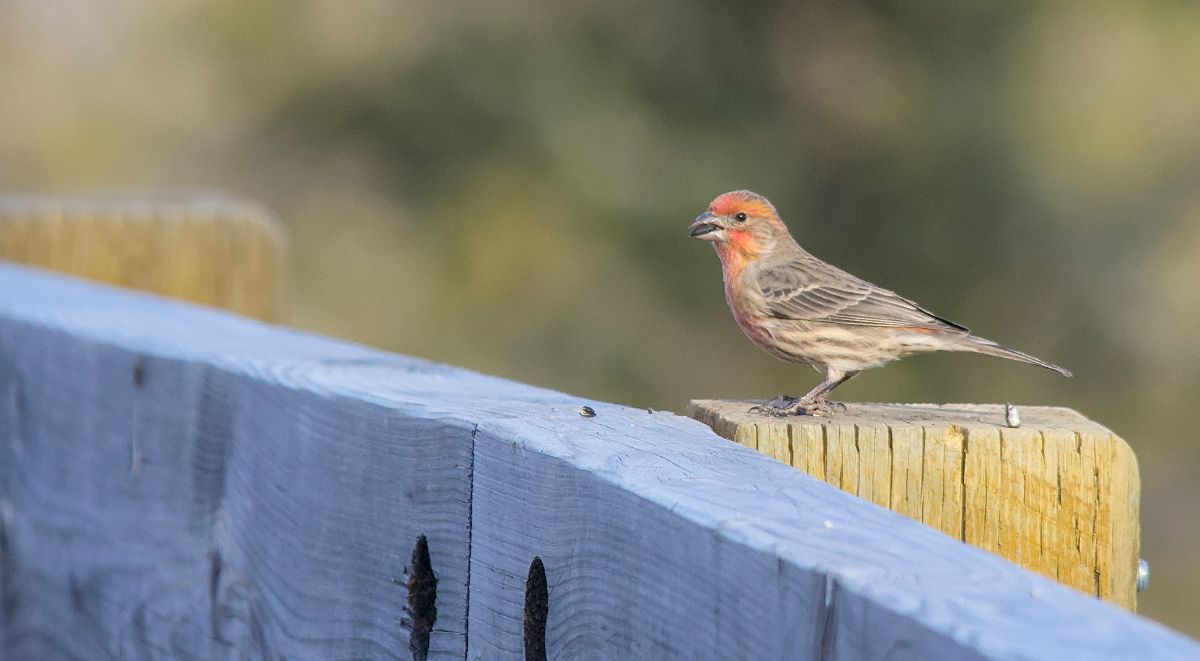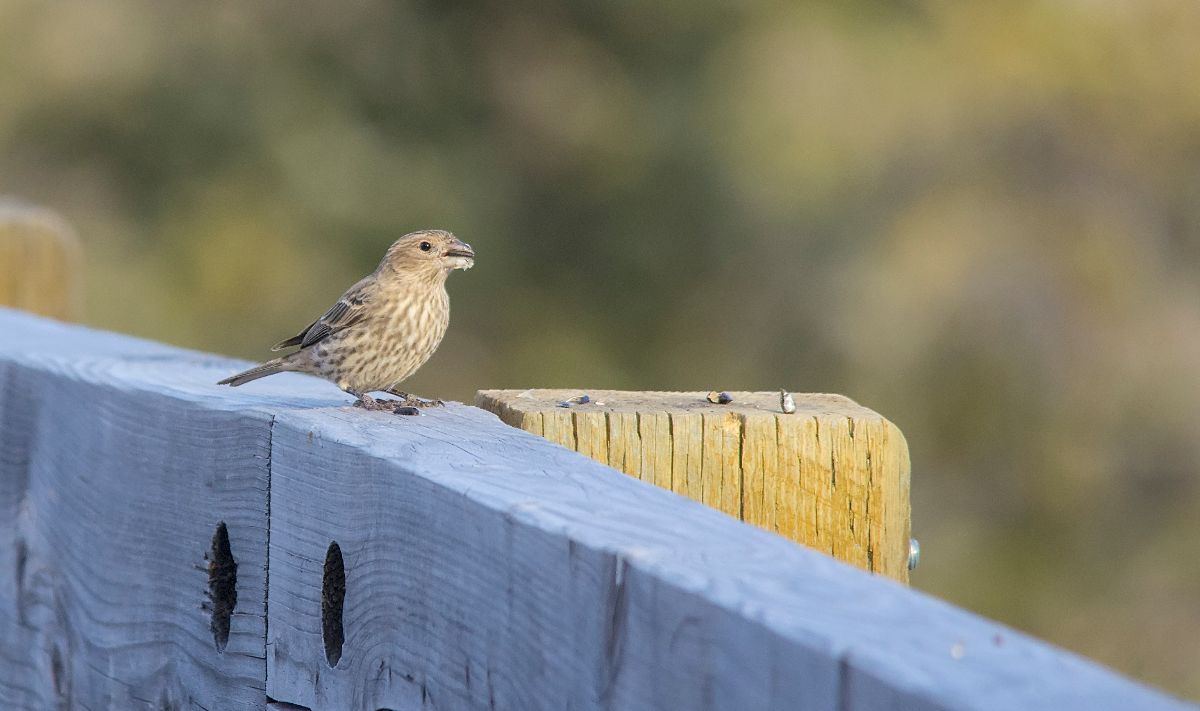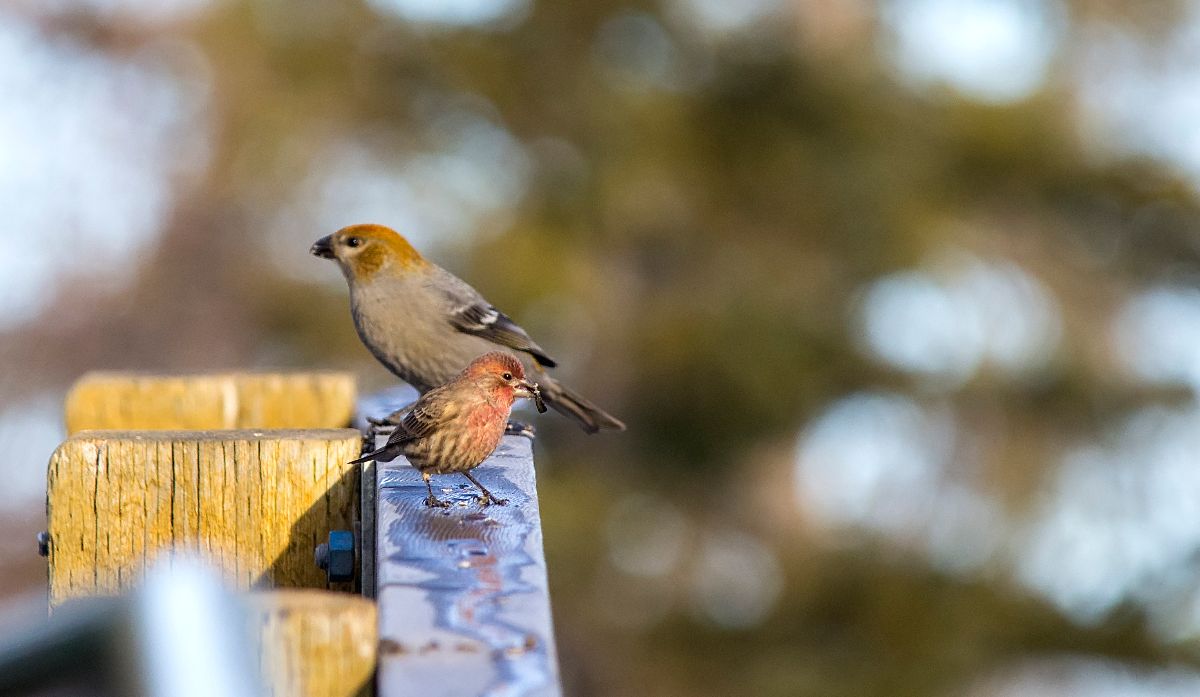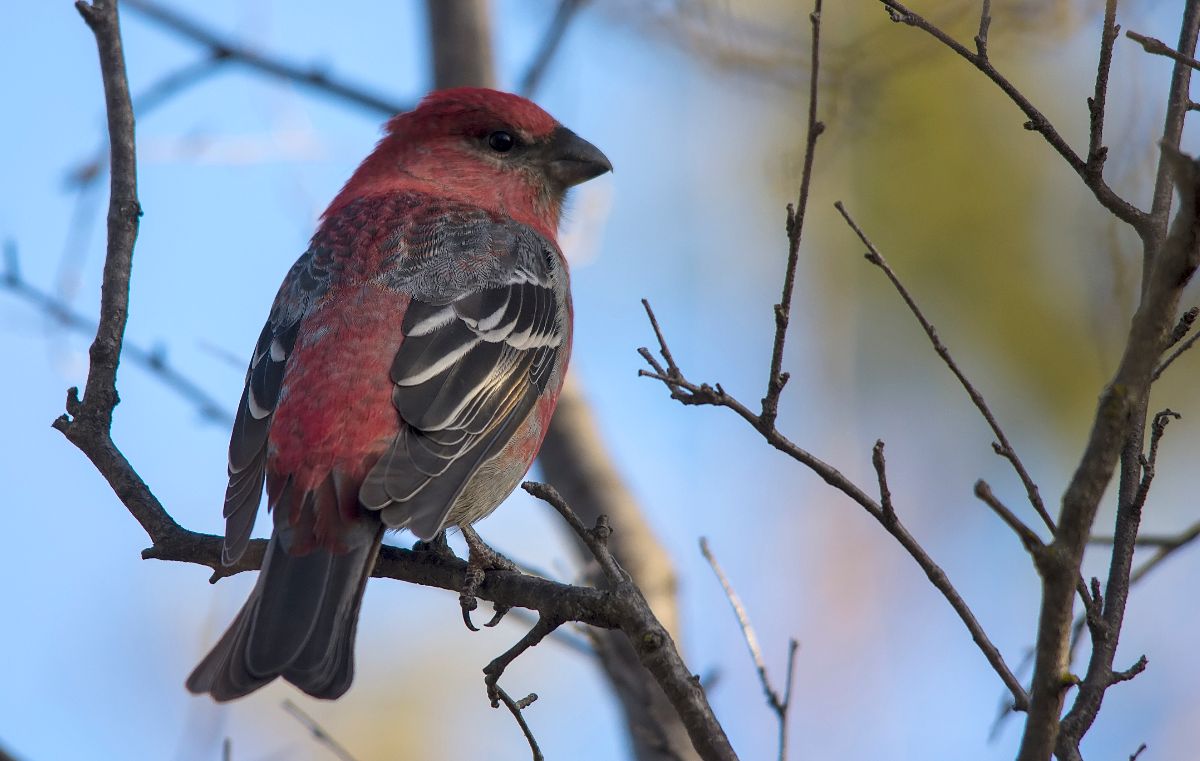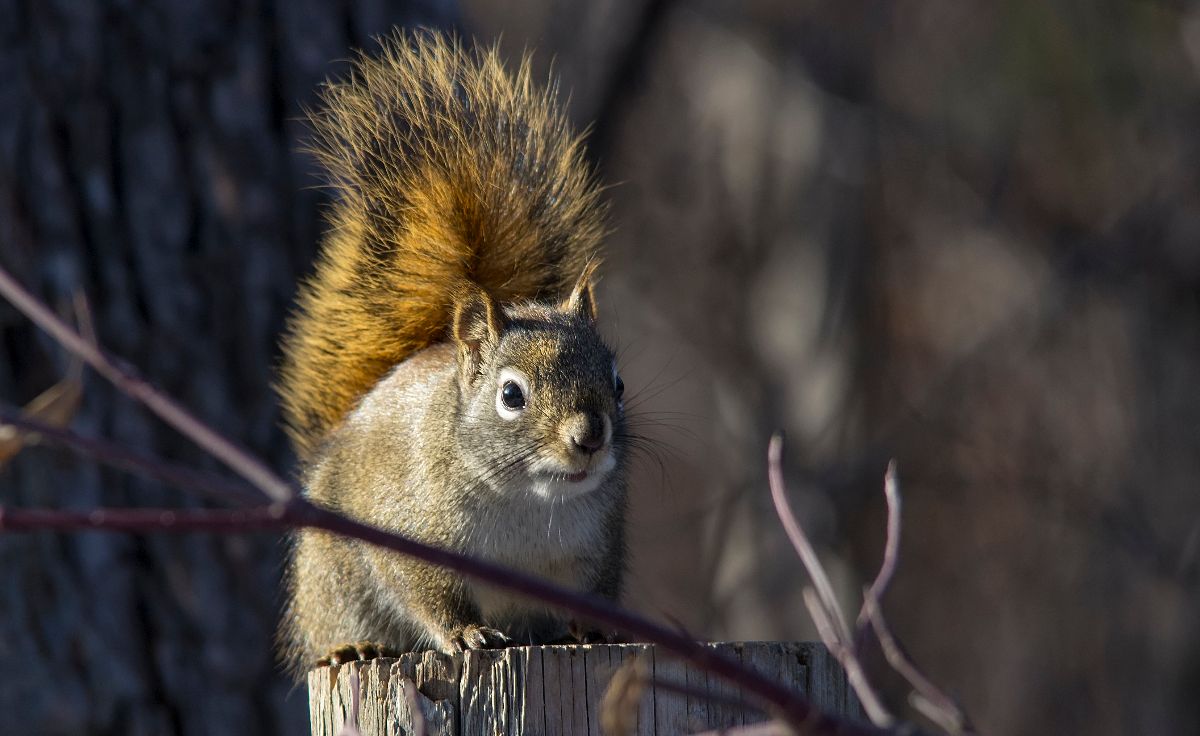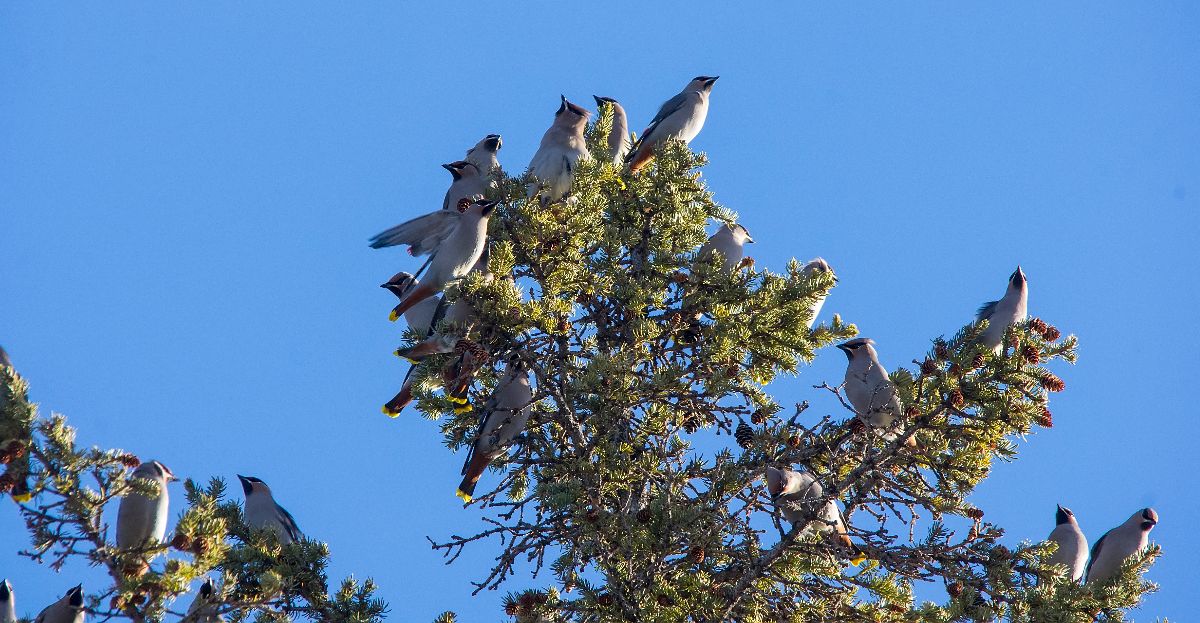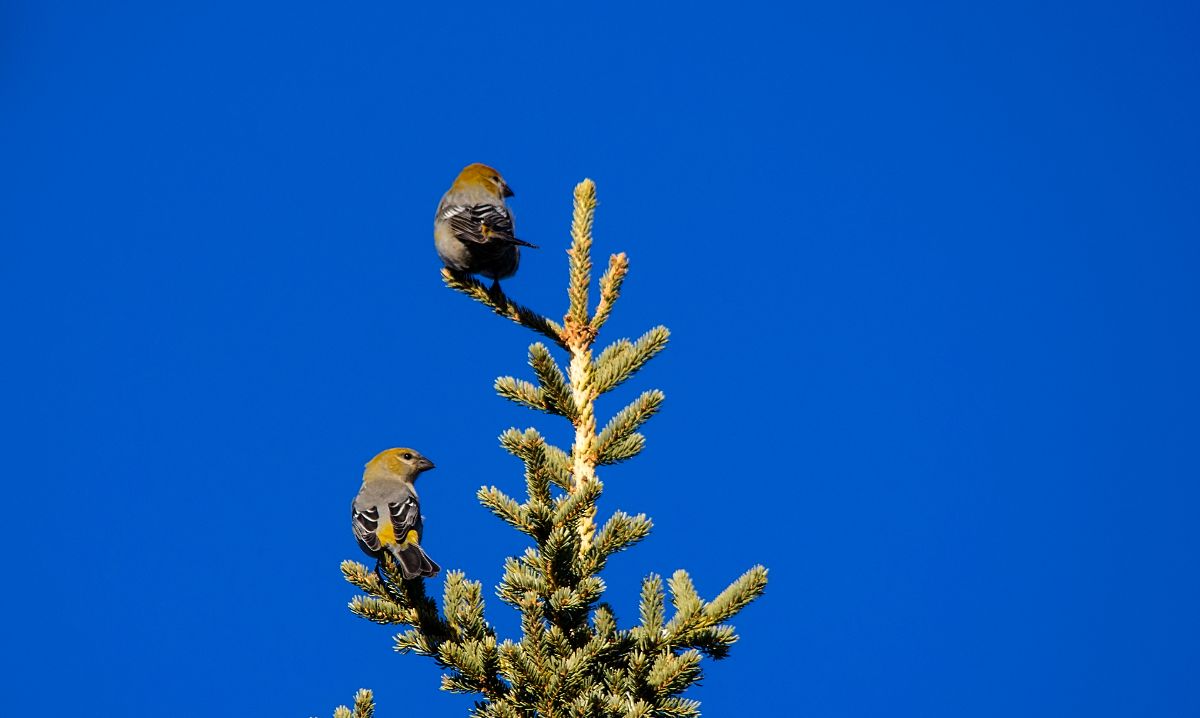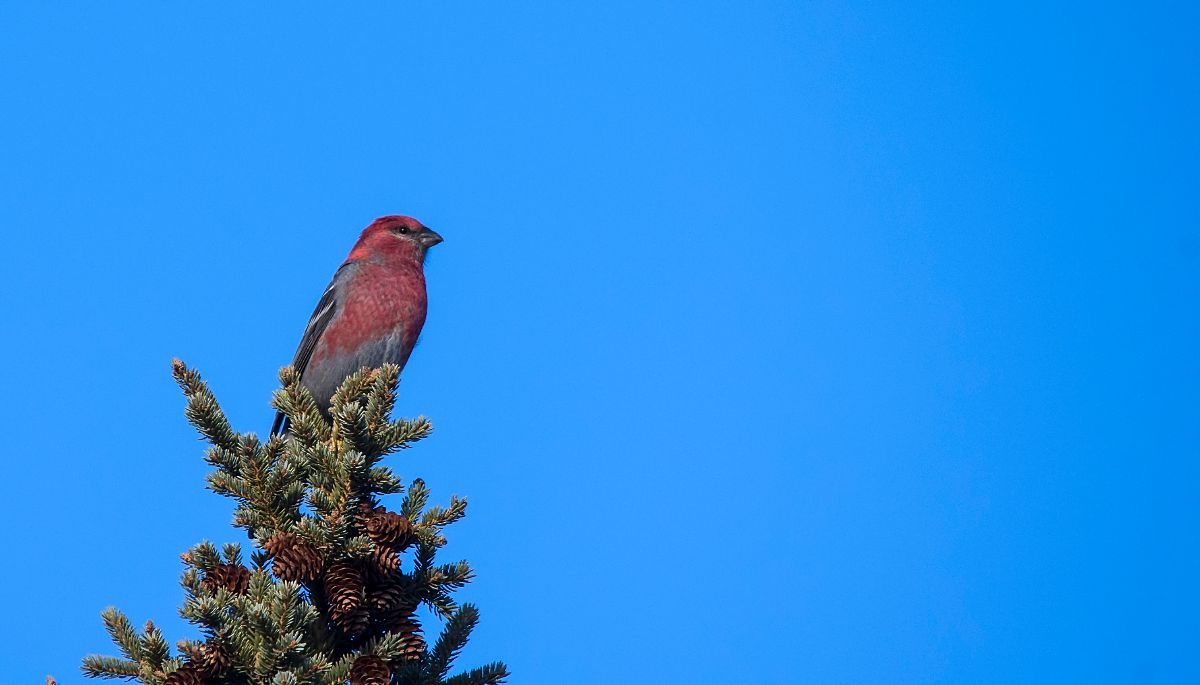Posted by Bob Lefebvre. All photos by Ron Chiasson.
One of the awesome things about winter birding in Calgary in the chance to see flocks of up to 5000 Bohemian Waxwings in flight, feeding on berries and apples, or eating snow on rooftops.
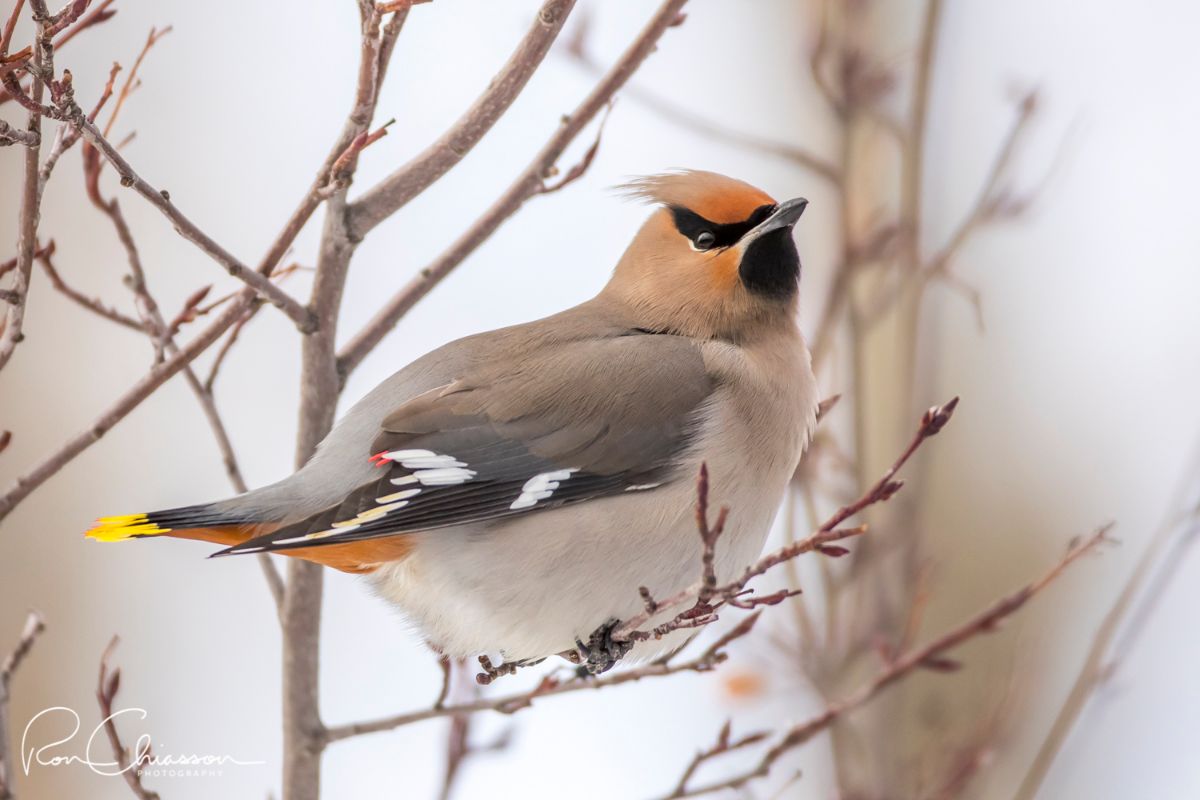
Bohemian Waxwing, Carburn Park, February 6, 2018.
These beautiful birds are only here in the winter, and their relatives, the Cedar Waxwings, are an uncommon summer breeder here. Although Cedar Waxwings are a late migrant, arriving in late May, and departing in October, there are usually some that attempt to overwinter here and they can sometimes be seen mixed in with the Bohemian Waxwings.
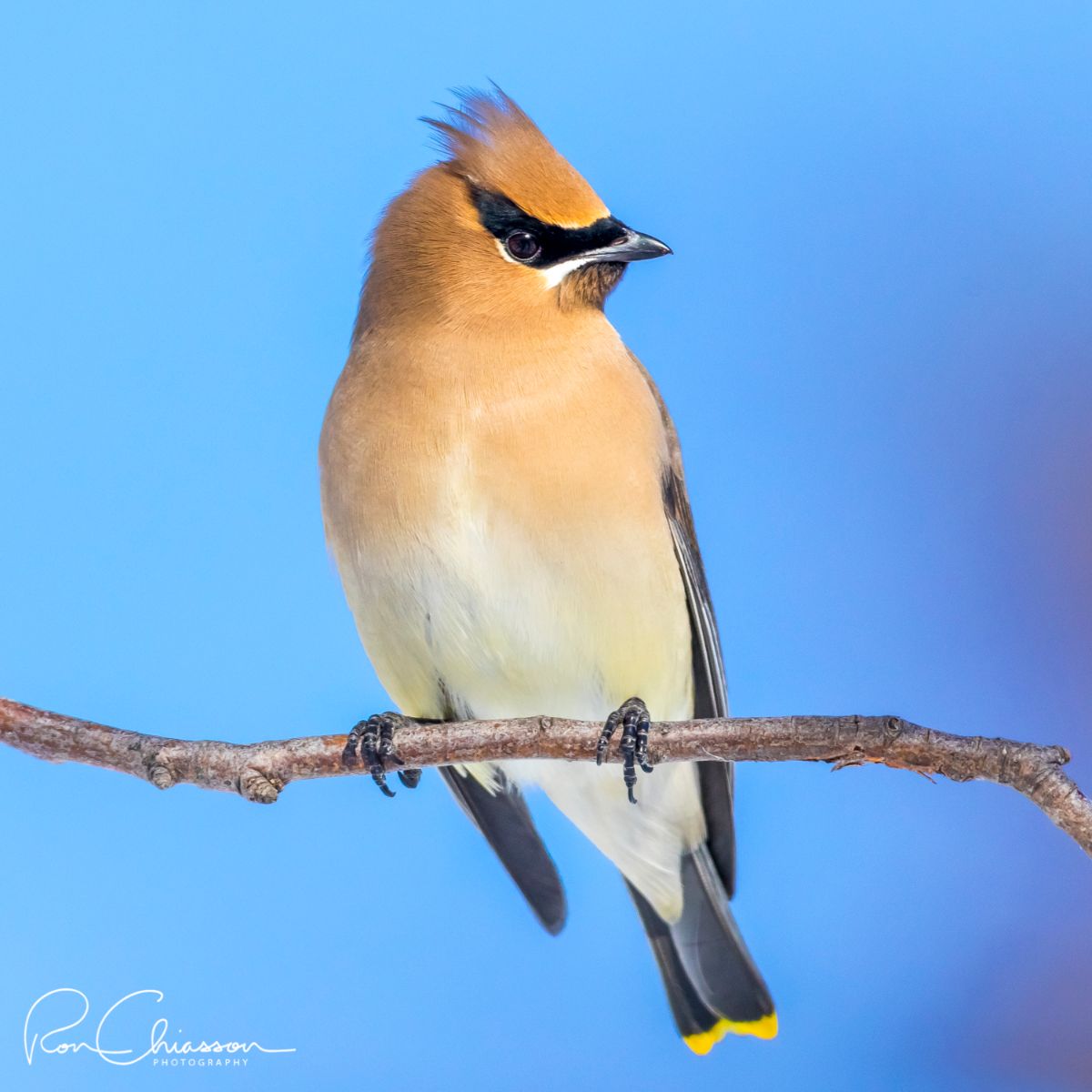
Cedar Waxwing, Confederation Park, February 28, 2018, .
We usually find at least a couple of dozen Cedar Waxwings on the Calgary Christmas Bird Count. They seem to be concentrated in the Elbow Valley downstream from the Glenmore Dam. This year, there were quite a few in Carburn Park in the southeast, and in the north end of the city, in Confederation Park and Queen’s Park Cemetery. In February I saw a flock of 36 Cedars in a residential neighbourhood near those north-end parks.
Here are two shots of Ron’s that show the two species side-by-side:
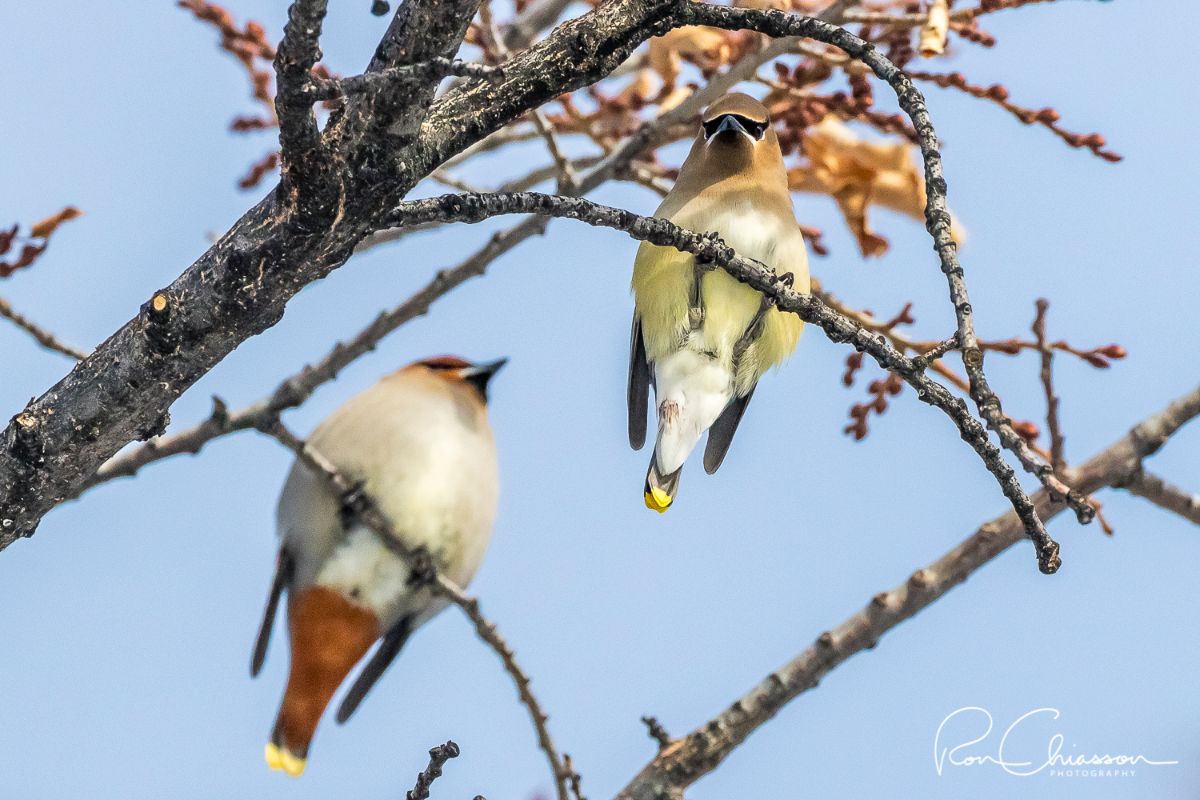
Bohemian (left) and Cedar Waxwing (right), Queen’s Park Cemetery, March 6, 2018.
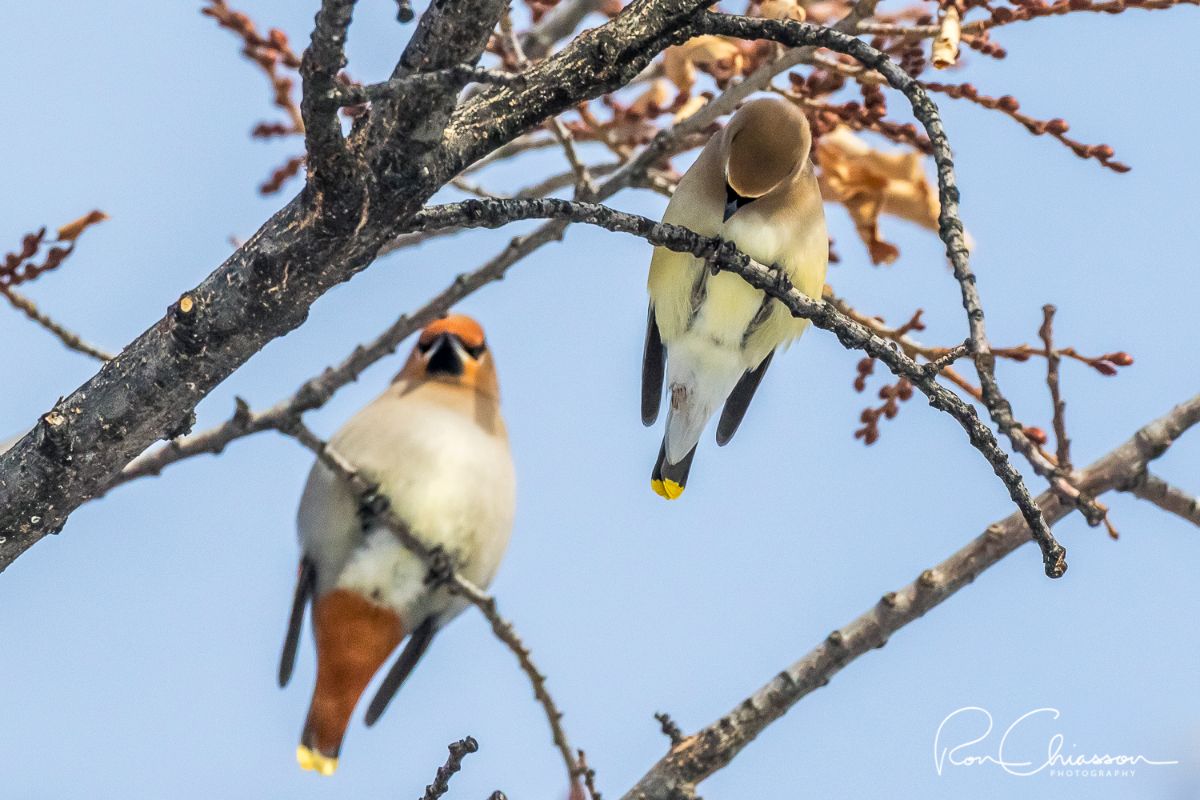
Bohemian (left) and Cedar Waxwing (right), Queen’s Park Cemetery, March 6, 2018.
These shots show some of the most obvious differences between the two: Bohemian Waxwings have cinnamon-red undertail coverts whereas Cedars have white; Bohemians are larger and more round-bodied than the sleek Cedars; Bohemians have a gray body including the belly, whereas Cedars are more brownish and have a pale yellow belly (sometimes white, but never gray). In the following shots you will also see that Bohemians have white tips on their wings (as well as red and yellow on adult birds) while Cedars only have the red tips (the wax) on adult birds and never show white in the wing.
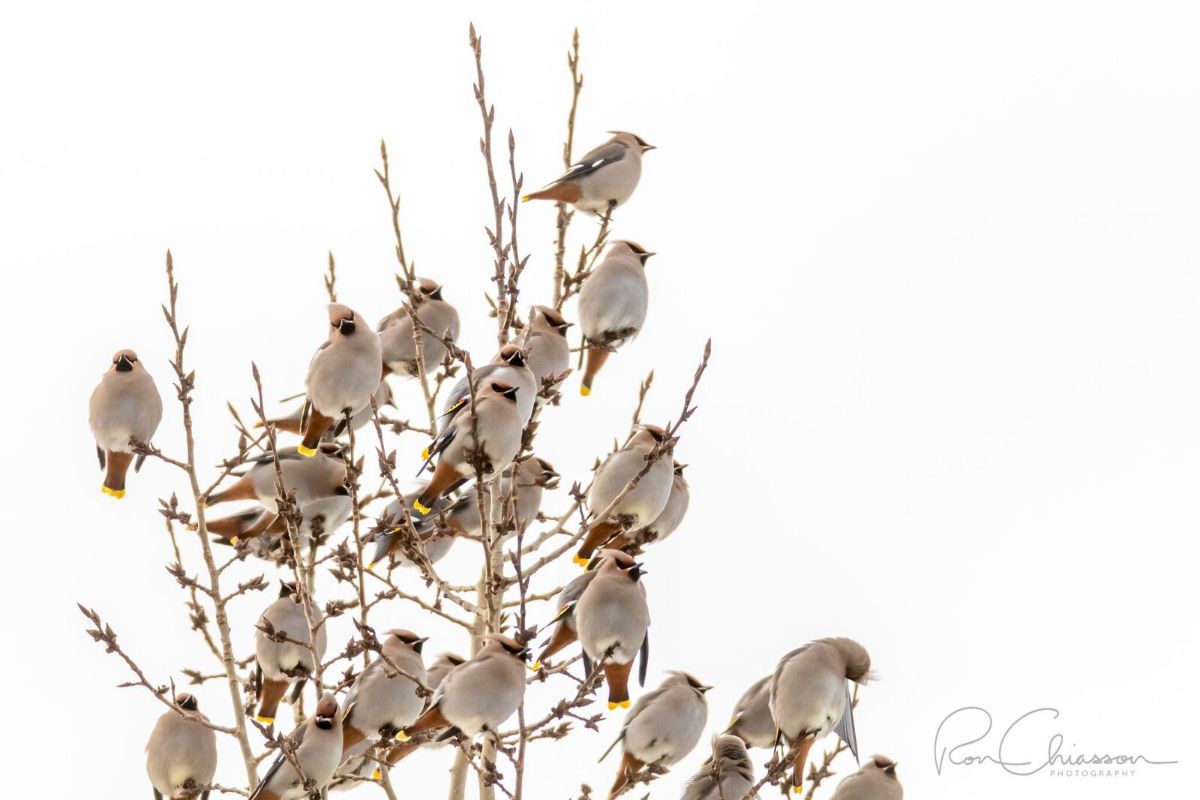
Bohemian Waxwing flock, Calgary, February 6, 2018.
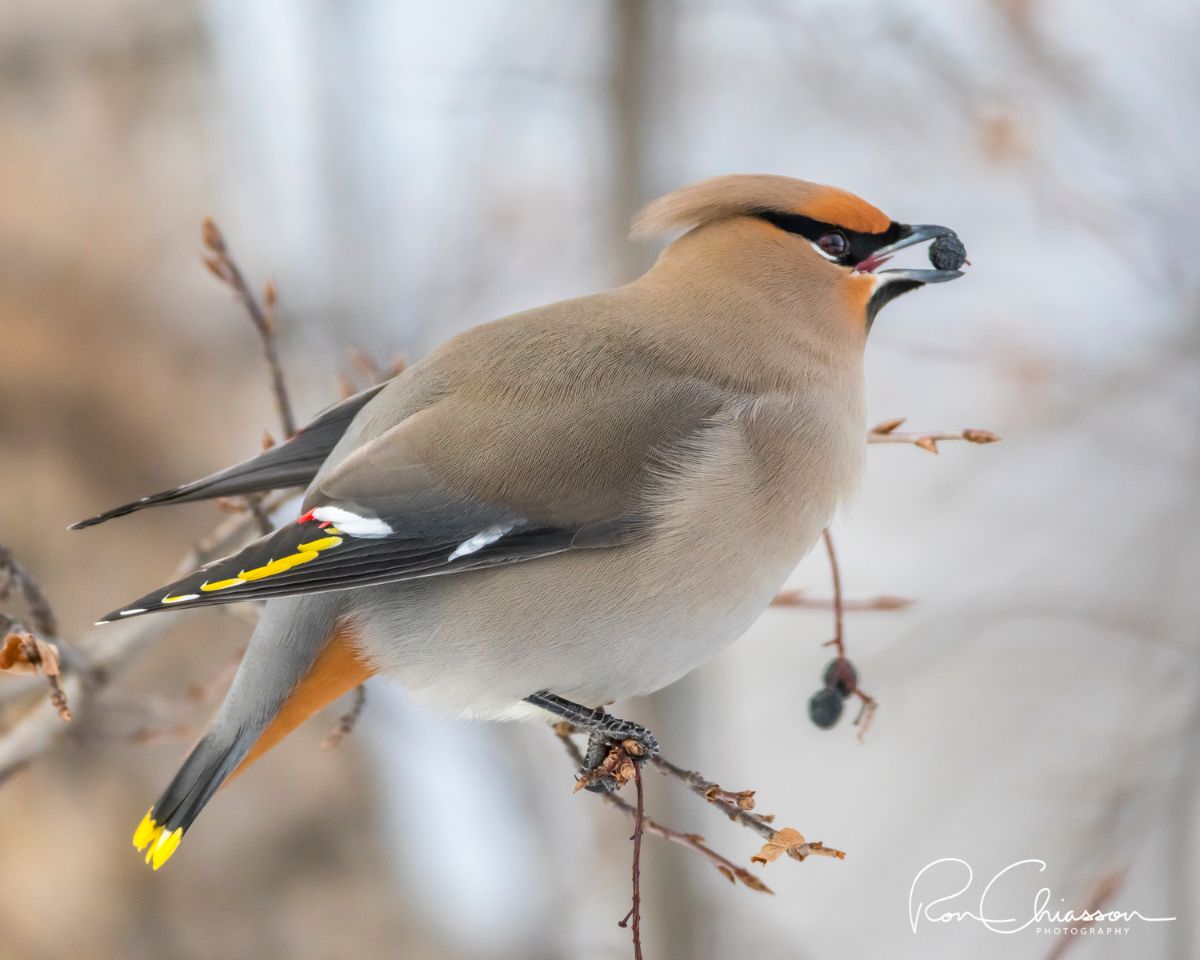
Bohemian Waxwing, Carburn Park, February 6, 2018.
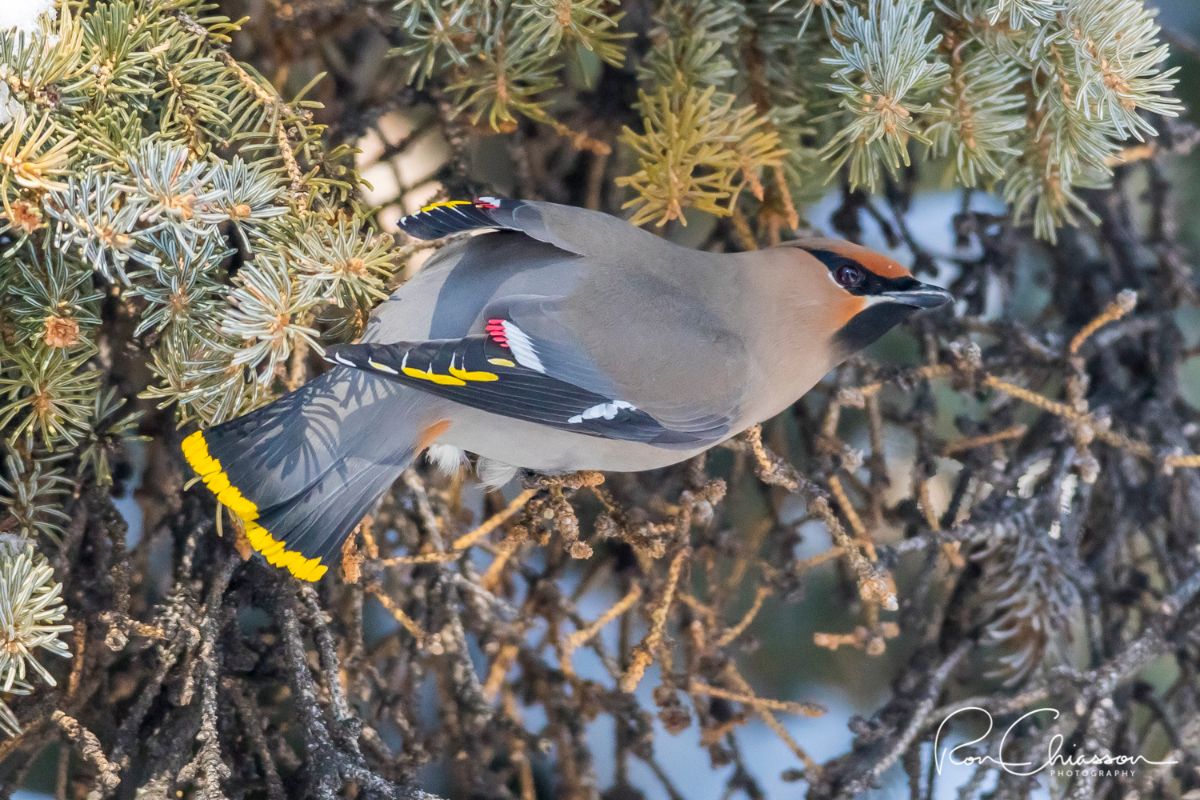
Bohemian Waxwing, Queen’s Park Cemetery, March 1, 2018.
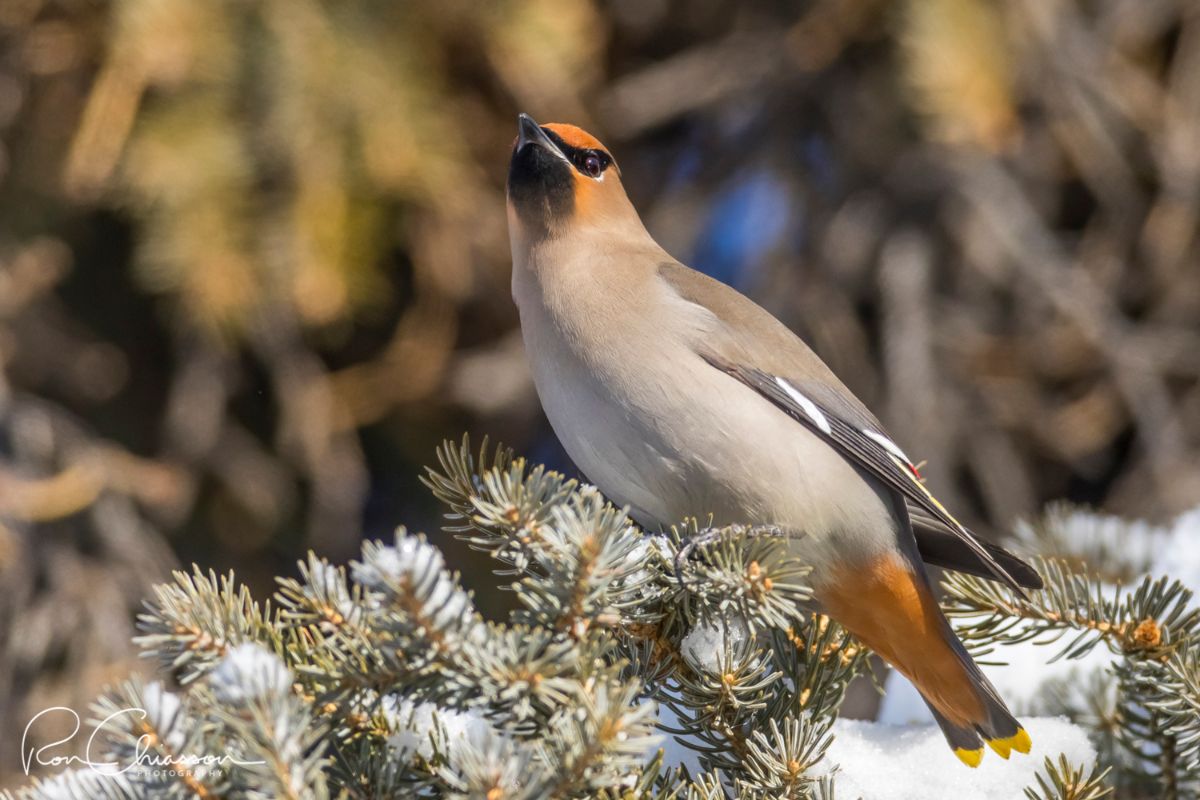
Bohemian Waxwing, Queen’s Park Cemetery, March 1, 2018.
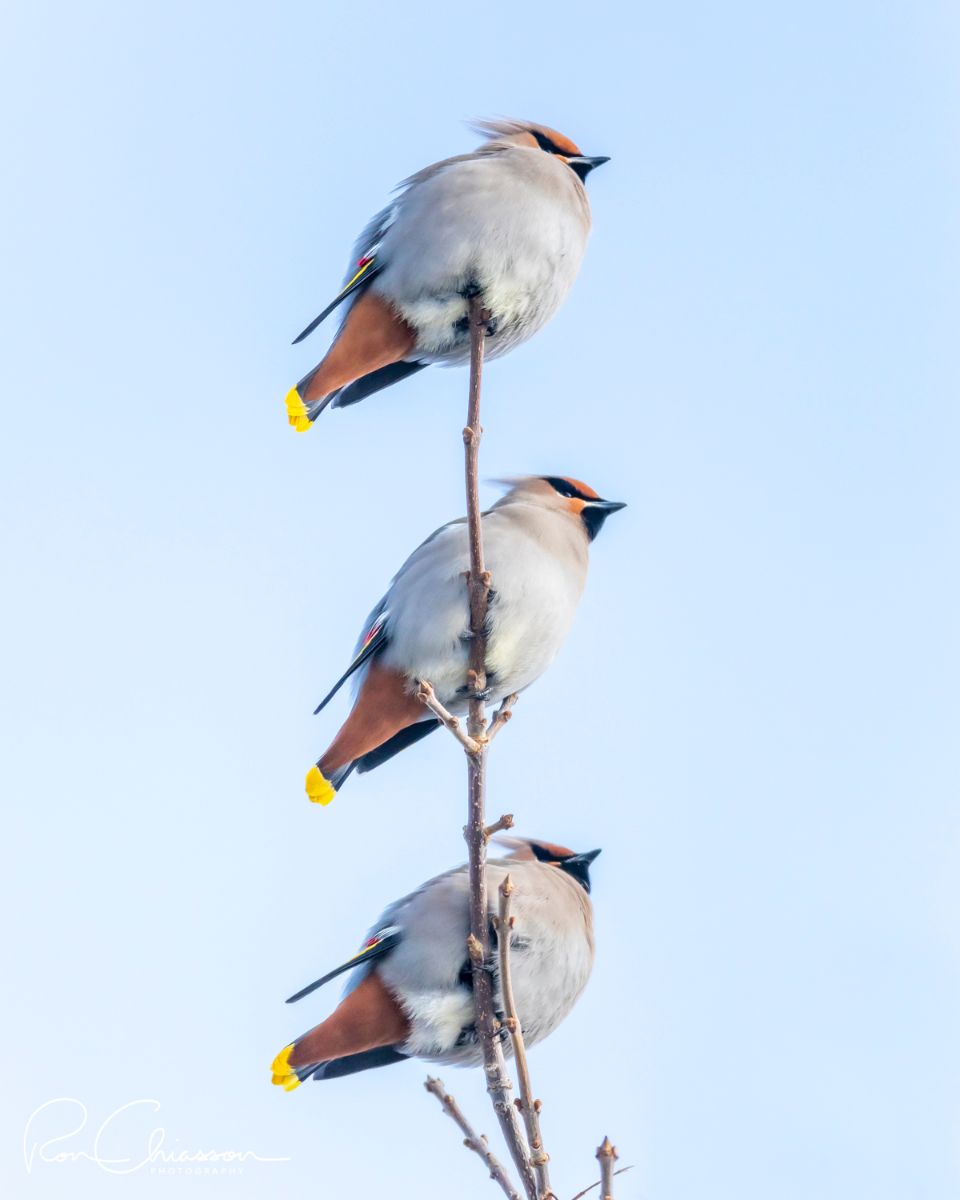
Bohemian Waxwings, Confederation Park, March 1, 2018.
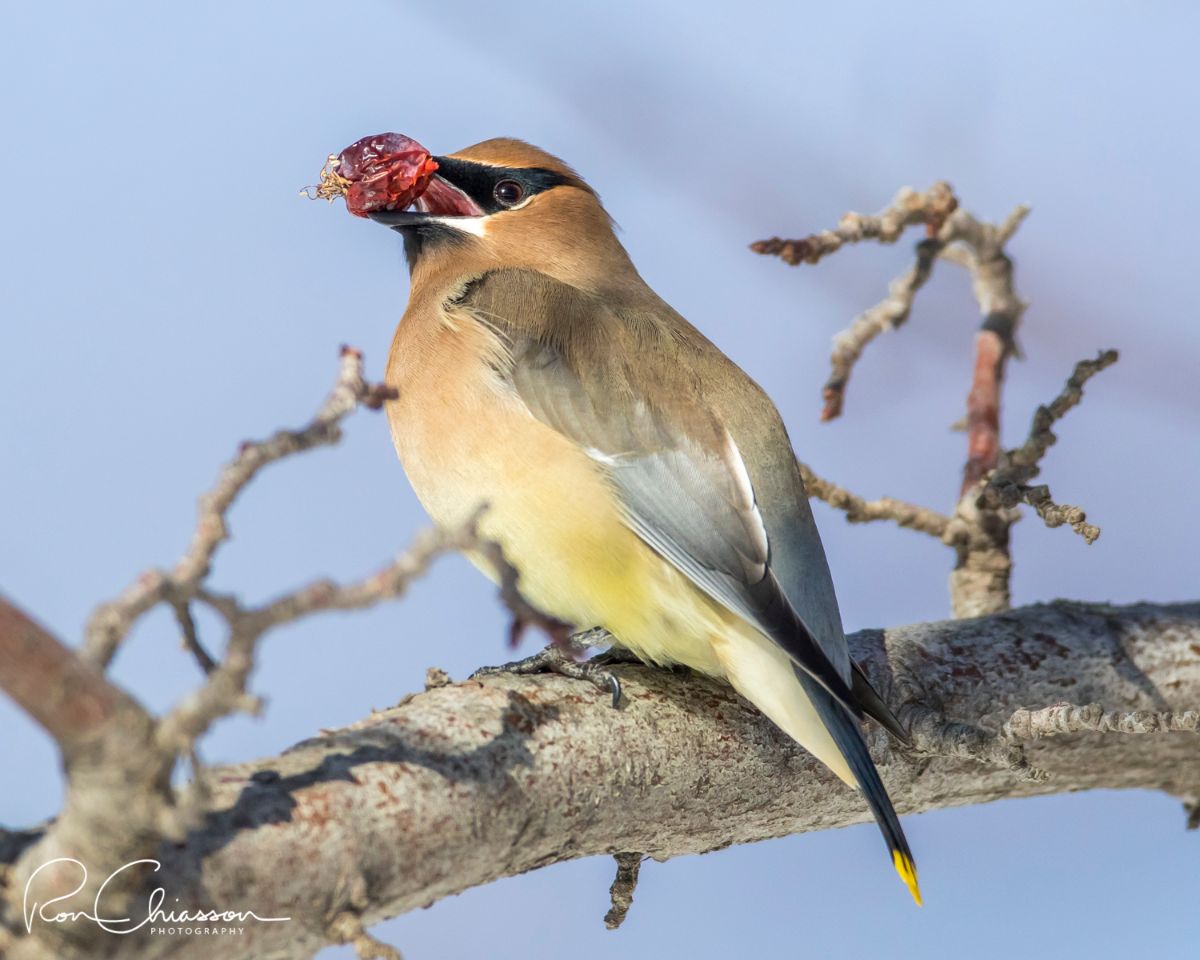
Cedar Waxwing, Confederation Park, February 28, 2018.
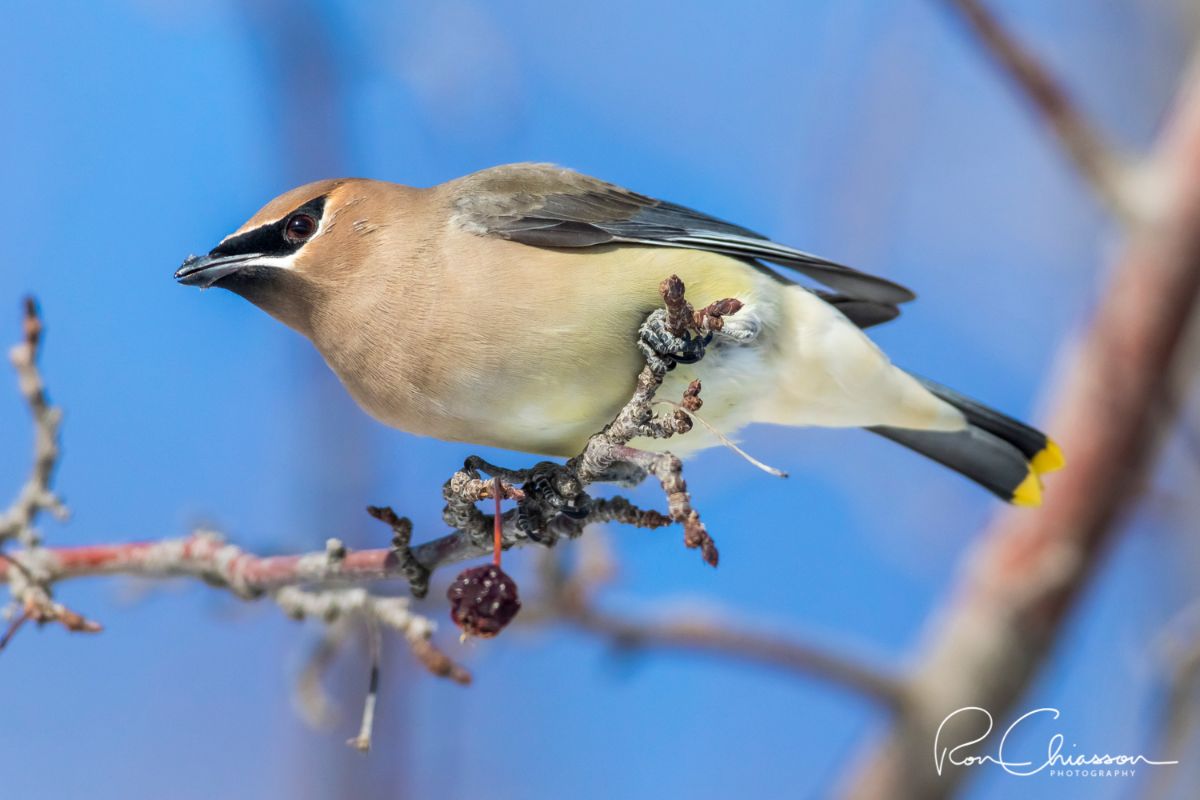
Cedar Waxwing, Confederation Park, February 28, 2018.
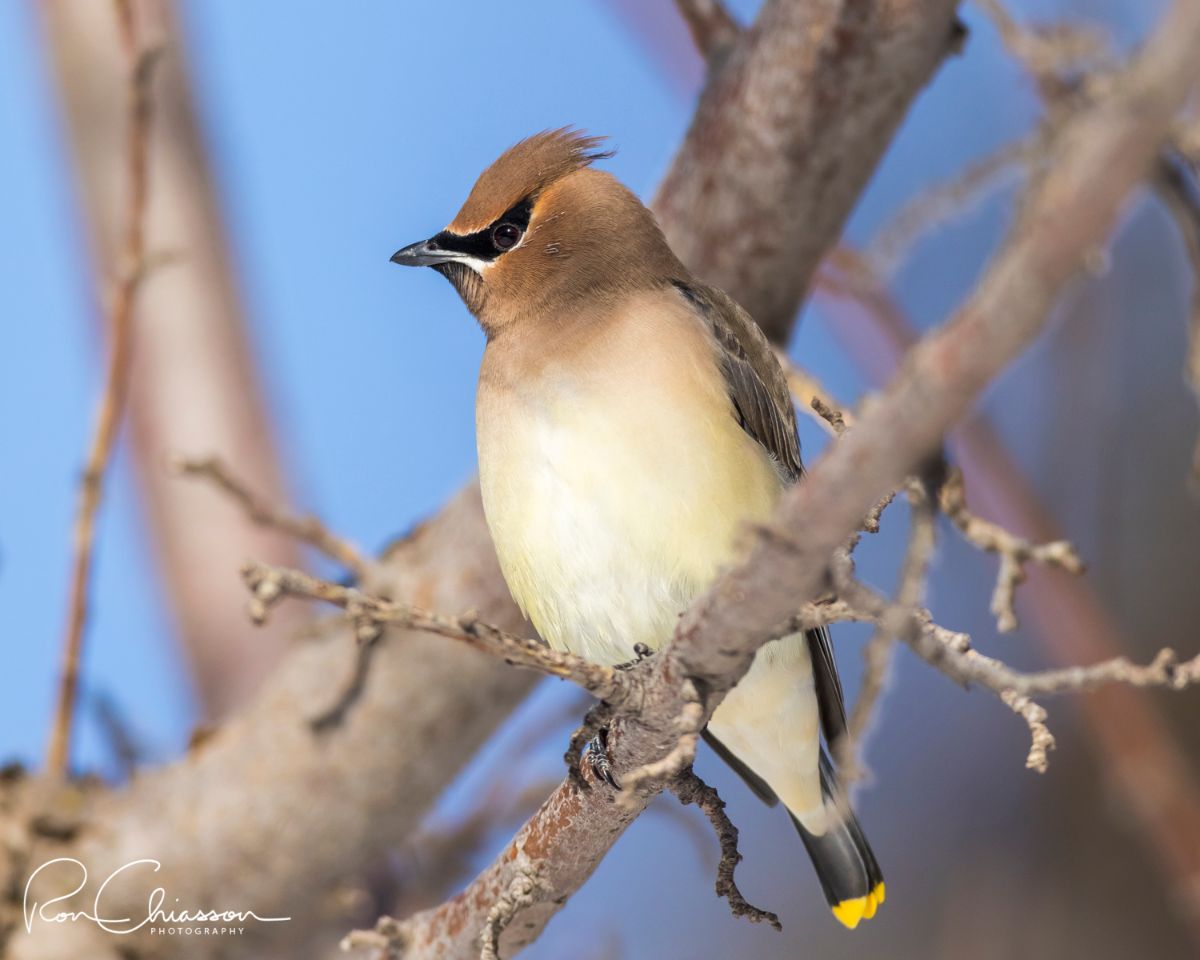
Cedar Waxwing, Confederation Park, February 28, 2018.
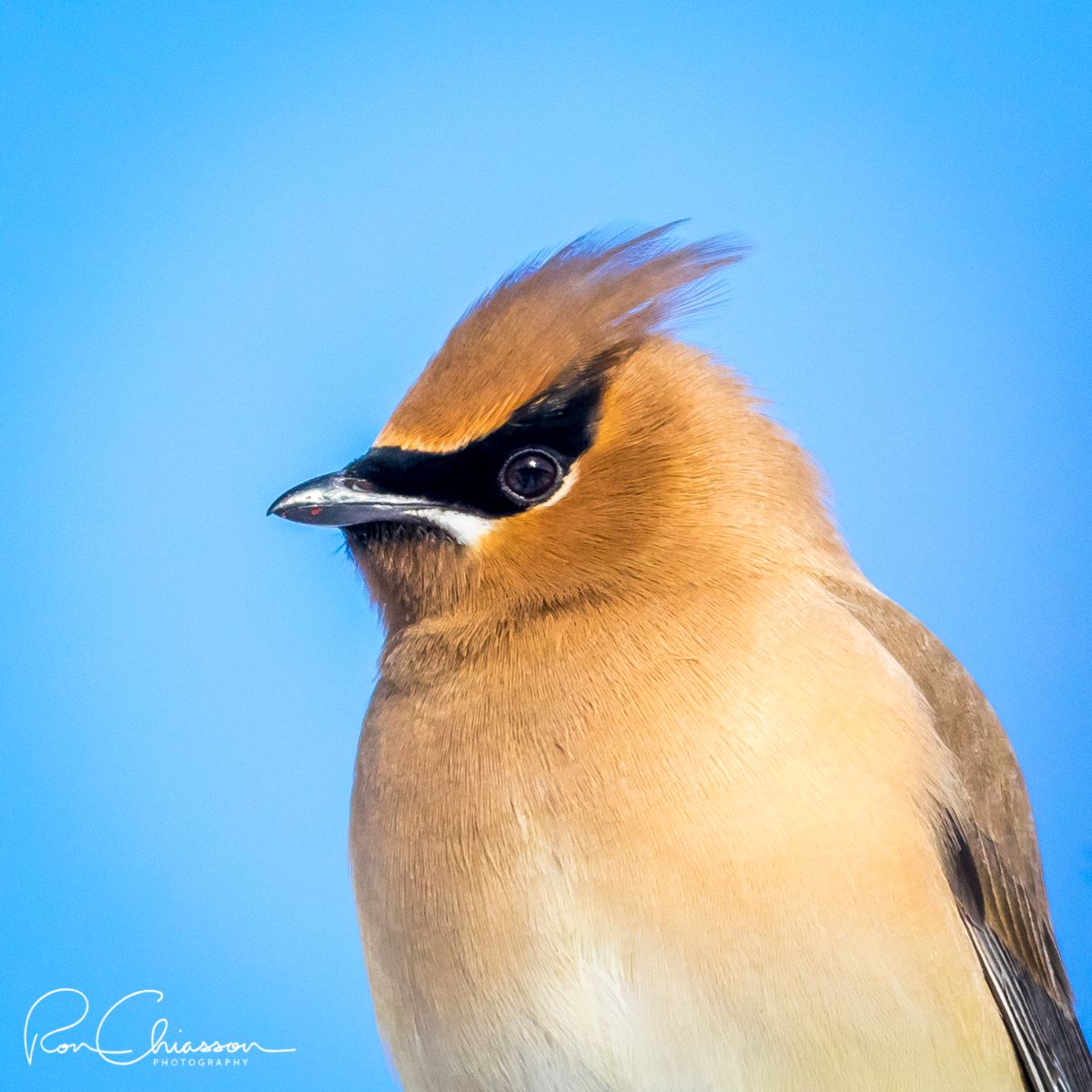
Cedar Waxwing portrait, Confederation Park, February 28, 2018.
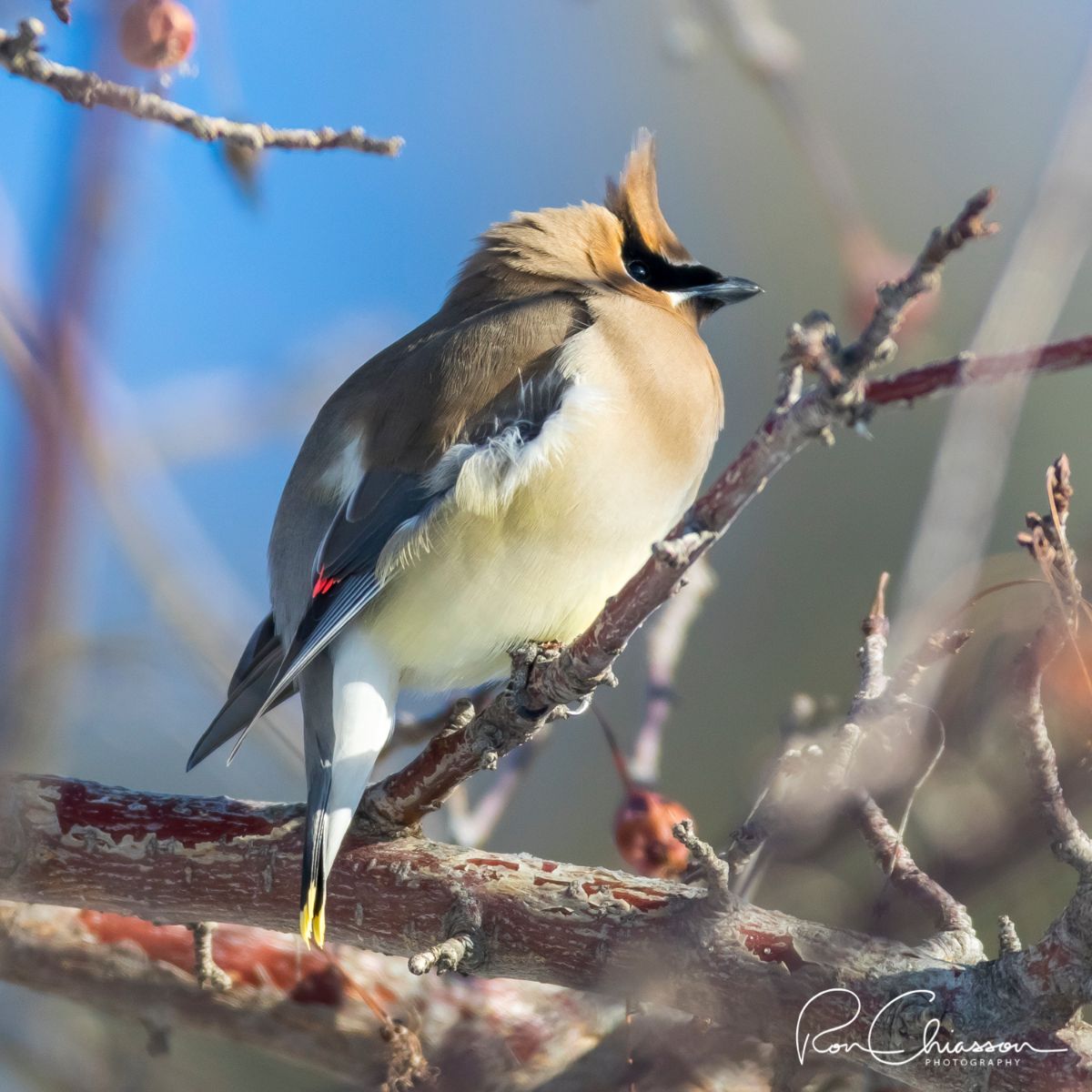
Cedar Waxwing, Confederation Park, February 28, 2018.
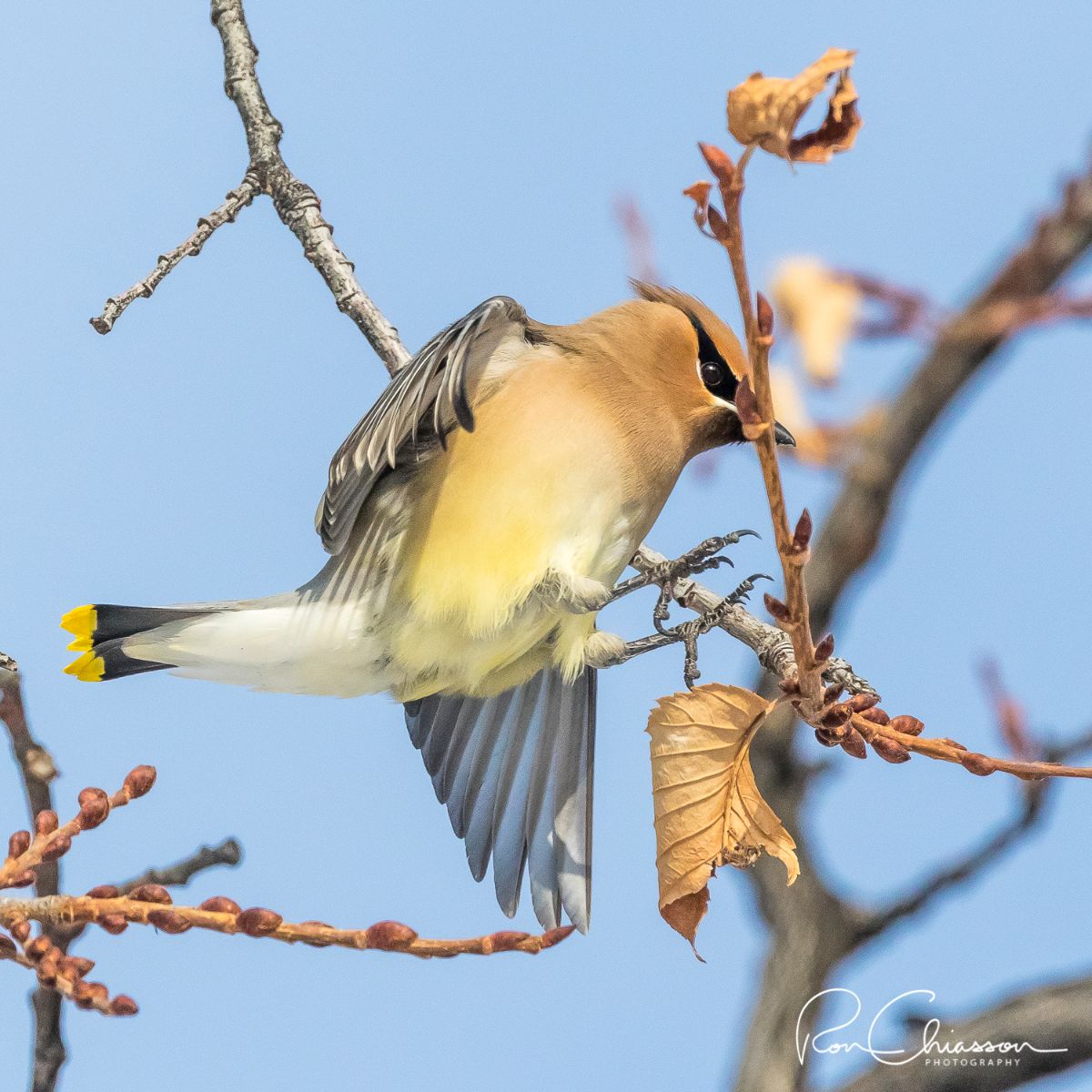
Cedar Waxwing, Queen’s Park Cemetery, March 6, 2018.
See more of Ron Chiasson’s photos here.














